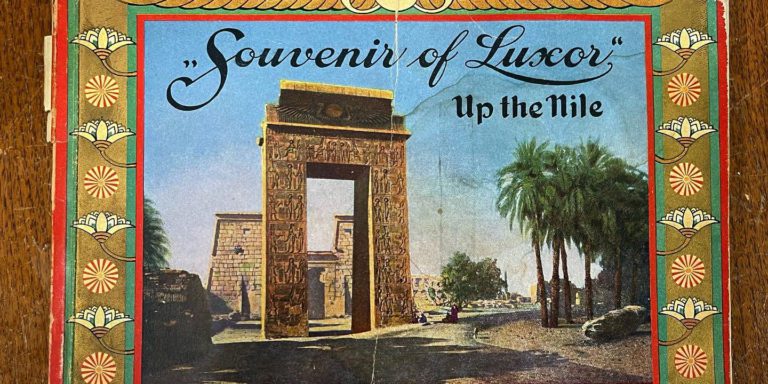
Monday, February 7
I was sure I wasn’t getting home. A whim arose: if I was trapped in Egypt, could I visit the pyramids on a day trip? Or would I be confined to quarters?
Sadly, there are no bars in Cairo.
My last day. Monday, February 7.
I got my negative test results on Sunday afternoon.
I will be picked up this afternoon and taken to Luxor Airport. If all my documents are in order, I will land in Virginia at 5 a.m. on Tuesday.
I’m ready.
The week has been so full. My cup runneth over.
I had a long leisurely breakfast out in the morning sun.
Then I took a carafe of coffee to a table on the Nile and caught up on some book business.
Do you know I am extremely controversial in some bookseller colleague’s minds? Bizarre.
I guess it goes with the territory. What I’ve done. Whatever it is I have done.
My shoulders ache but are improving. I’d brought a course of Prednisone my doctor had prescribed should I ever need it—for other reasons. Thank God.
Several days ago after a third day tombing, I tripped at the hotel. My toe caught the edge on a concrete first step. I landed wrong, and “Ouch!!!” I was glad nothing broke.
Stupid. Sad. Pathetic.
Bizarre in that I went down and up many thousands of steps that very day. The Valley of the Queens and the Valley of the Artisans. Many uneven and in the near dark.
How many steps?
The tomb of Ay—the last I visited in the Valley of the Kings—is 150 meters long (and down.) I guessed 300 stairs down and, of course, the same number up in that tomb alone! (Ay was Tut’s successor. A commoner originally. Ruled with Tut’s wife for a couple of years and disappeared. Perhaps he was “disappeared”?)
Did I visit 30 tombs in the Valleys of the Kings, Queens, Nobles and Artisans over three days? Some steps were ladder steep. Some wooden. Some stone. Many uneven. Some nearly dark.
Thousands of stairs.
Not a stumble. My legs were heroic (to me anyway.)
After downs and ups in the Queens and Artisans tombs and numerous other sites, I got back to the hotel and scoped out where Ray and Jay and I could enjoy a Martini and watch the sun set across the Nile for a last time. I noticed the pool bar had Happy Hour from 5-6. BOGO. All set! I headed for my room to freshen up. I’d switched from boots to clogs and I suppose that made a difference. I was ebullient for many reasons. Perhaps that made all the difference. My toe snagged on the first step. I went down like a stone onto my forearms. My upper arms were jammed into my shoulders.
The soles of the boots I’d worn all day have a far different profile than the clogs I’d switched to for airy comfort. The clogs are much thicker and make me an inch and a half taller.
Excuses… carelessness. Stupidity.
So stupid!
(No, I hadn’t had a drink. Yet.)
My boots. They have been heroic. These have served me many, many years. I’ll add a poetic homage to them at the end.
Coffee on the Nile. Birds and boats pass by. A feral cat wanders by, hoping I’m a mark.
And the water flows as it has forever. Whatever forever is.
I have nothing to do today. My flight isn’t til 6:40. I got a late checkout.
I will float on the white cloud of the Hilton bed and write.
I hope the length of this next story will not be tedious or frustrate my editor, who must put this all together.
I hope not too much of it is self-absorbed.
Do the readers want less feeling and more fact?
(Feel free to write to me and let me know what you’d like more or less of. I have big fat journals full of feeling. I can put more there and less here.)
One afternoon, I considered walking into the neighborhood outside the hotel. It is a main road but narrow, dusty, medieval. I asked to be dropped off at the gate. The driver looked at me quizzically. I stepped toward the sidewalk, and immediately I was called from across the street.
“Hallo! Mister! Come see…” “Hallo!” “Hallo!”
It is not threatening or unsafe. It is just that I would attract people like…
In Dindera, one pushy shop owner pleaded, “Please come see my shop. Two years, no business!”
When I visited Cairo in 2006, I ventured out into that city alone a number of times. I wandered through abject slums and was never bothered. In commercial areas like Tahrir Square, I was hounded. Men would gently try to take my arm and guide me “come to my jewelry shop…” “To my brother’ spice shop…” “Come see…”
More than annoying and distracting. Impossible to brush off every one of them.
Impressions.
The first morning. Monday, January 31.
A donkey brayed at dawn.
Where am I?
I woke into focus.
In a hotel room overlooking the Nile.
The Hilton compound could never have livestock. It must be across the Nile. How wide is the Nile here? I think a mile. The other side is so far away. But sounds carry on the wind and over the currents.
I stirred myself awake and went down to breakfast.
The Nile.
How did I get here?
Ray and Jay.
Barbara.
Points and miles.
Accumulated COVID points and miles. The trip is virtually “free.”
Where am I going today?
I stretched across the bed for the itinerary.
Sunday, January 30th, 7:45 AM—Picked up at airport by Medhat and the driver and taken to the Luxor Hilton. Check in and relax at the hotel. In the late afternoon Jay and Ray will come pick you up and take you to Chicago House for a look at our facility, then back to the Hilton for a drink and early dinner.
Monday, January 31st—Picked up by Medhat and the driver and go to Karnak ticket office in the morning for a Luxor Premium Pass, and proceed to Luxor Temple (where Jay works) for a tour with Jay, followed by lunch at the Winter Palace with Ray and Jay. After lunch Karnak Temple tour in the afternoon with Medhat and Jay/Ray.
Tuesday, February 1st—Picked up by Medhat and the driver. Pick up Jay. West Bank: Colossi of Memnon, Medinet Habu (where Ray works), Valley of the Kings, Hatshepsut mortuary temple at Deir el-Bahri.
Wednesday, February 2nd—Picked up by Medhat and the driver. West Bank: Valley of the Queens (including Nefertary tomb), Deir el-Medina workmen’s village, Ramesseum (mortuary temple Ramesses II.)
Thursday, February 3rd—Picked up by driver and Medhat. Day three on West Bank. Tombs of the Nobles—including tombs of Ramose, Reckmire, and Sennefer. Sety I Gurna Temple.
Friday, February 4th—Picked up by driver and Medhat. Dendera Hathor temple (north of Luxor.)
Saturday, February 5th—Picked up by driver and Medhat. Esna and Edfu Temples (south of Luxor.)
Sunday, February 6th—open.
Monday, February 7th—check out at noon (check on late check-out), hang out at hotel, Egypt Air flight 69, 7:40 PM to Cairo.
Ray and Jay had this all planned. Which was critical. You can’t “do” Luxor on your own. I don’t think there is anything like a car rental. The “state” wants to know where foreigners are all the time. To leave the area, your driver and guide need to get permission—a couple days in advance.
The roads are mostly unmarked. The sites too. The few signs are usually in Arabic.
There are checkpoints everywhere. Everywhere. Every quarter mile or so, there is a soldier or two. Then a police or military vehicle. Often it is Toyota small size 4wd pickup with an armored metal box over the bed. There are many, many “pillboxes” made of stone and raised 8-10 feet off the ground along all the routes. The barrel of an automatic rifle protrudes 6 inches from the lone window.
Guns? Everywhere. 1 or 2 shotguns at small posts. A dozen AK47s at busier ones. In the hotel and other commercial areas, innocuous men in street clothes have pistols on their hips.
In a mile of a populated area, you pass 1000 guns—that are visible.
Security. The net is so spread out, and the netting so fine that no one could get far. And that is the idea. And likely what the majority of the population wants.
Security. Stability.
People. They have been invariably friendly. I have encountered no insults or scowls of evil eyes. No hint that Americans aren’t welcomed. Wanted. Needed.
Indeed, so many say “welcome” everywhere you go.
“Are you enjoying your visit?”
On the negative side, it is a “game” for shopkeepers and vendors to hassle you. Some to excess. “Come look!” “Only one dollar.”
They reach in front of you, matching your steps and holding some piece of junk before you just below your chin, so you nearly have to push through their hands to continue.
The worst was a young man in a souk I was forced to pass through at some tomb area. (Think the museum shop that is the only exit from an exhibition.) He was very aggressive, and I had to continually angle away from him. Finally, Medhat growled, “Too pushy!” There followed a brief verbal argument in Egyptian.
And worse than the “retailers” were the tomb keepers. Guides are not permitted in the tombs. They must remain at the entrance. The tomb keepers are always in a thawb and headdress or scarf. Occasionally they unlock a tomb, but usually they just follow you down. Some are trying to be helpful.
“This Osiris. This Pharaoh…”
Some are clearly pushing unwanted services in exchange for baksheesh. (I’m not sure what they are getting at in this link: “…one of your dollars equals 5$…” The Egyptian Pound is about 6 cents. $1 USD = about 15 EGP.) So this official link is more than confusing.
If you let them help you—even unwanted—you are in their debt.
I was often glad when other tourists would appear in a tomb to distract the pushier ones.
Annoying and distracting. If I want help, I’ll ask for it.
One guy took my phone after much debate. (If they take your picture—you owe them.) He walked around the bottommost tomb and set the phone on the floor and took numerous photos of the ceiling and the walls. He made it clear I was finished then. I was alone with him many meters underground. When I started the steep climb up to the light, he grumbled, “Baksheesh.” I told him my guide would pay outside.
“I am not leaving here.”
Really? You haven’t left my side since I entered.
“My guide will pay.”
I discovered this was another ploy for some. The tourist will pay in the hole. The guide will pay again in the open air.
This was the worst repeated experience and really detracted from many of the most fantastic tombs.
In the city of Esna, after we’d visited the sunken Ptolemaic temple, we went in search of an ancient olive oil press that was on a map of the city’s 5 attractions at the gate.
The usual gentle assaults started. “Visit my shop, please! Two years, no business!”
Some guys seated outside a mud brick hovel importuned me, “Cotton?”
I don’t think the bale would have fit in my carry-on.
Passing through an updated souk where most of the shops were closed (COVID), we crossed an invisible border, and a dozen children surrounded us. They were very excited. Some had likely not seen but a few tourists in the last couple of years.
“Where you from?”
“U. S.”
“America the best!”
Perhaps if I’d said, “France.”
“France the best.”
They dogged our steps, buzzing around us like flies. Ray and Jay both have plenty of Egyptian and asked to be left alone.
One 11-year-old had pretty good English.
“What’s your name?”
“Chuck!”
“Hallo, Chuck. I am Ahmed. You are Ahmed friend!”
It eventually got to, “Monee, Chuck!”
We surrendered and headed out. At some invisible border, the children evaporated.
We never found the oil press.
When we left the Hilton compound, we were immediately in the third world. A roadside butcher had a carcass hung on rope before him. He contemplated it. His son next to him was learning the family trade. Occasionally he would slice off a chunk after determining the best path—like a jeweler shaping a diamond. I saw 8 or 10 of these on the trip to the west bank.
One morning a few blocks from the hotel, a white mass on the ground next to the road caught my eye. A goat had just had its throat slit. Its carcass was twitching on the curb.
Dusty extremely narrow alleys extended from the main road. Old men sat on curbs, steps or wrecked chairs and contemplated… whatever they contemplate. There were men chatting everywhere. Chat is a sport here. There is nothing else to do. The residents and cops and soldiers were stuck wherever they were. Chat.
Tuesday
Tuesday, February 1st—Picked up by Medhat and the driver. Pick up Jay. West Bank: Colossi of Memnon, Medinet Habu (where Ray works), Valley of the Nobles, Ramessium
I already covered much of the Medinet Habu site in last week’s story. That is where the mud bricks were being made to the ancient formula, Ramses’ bed, throne and toilet in his personal “green room.” The severed hand count. The severed “pickle” count of dead opponents which was deemed far more accurate.
Ray, my friend from Maryland, was able to join us. That was also when I learned my mild-mannered Maryland neighbor and friend was a rock star Egyptologist.
More on the both later.
We first stopped at the Colossi of Memnon. (Going forward, you will need to Google any you want more on. I took hundreds of pictures. You can see many on the Instagram accounts.) So much of what is going on now is putting things back together.
The two giants you first encounter at a little gravel pull off are enormous. They had been knocked to pieces long ago.
I stood and gazed up. And up. Now battered, much of their detail hacked away, they are still noble and imposing. They are the eastern gateway to what had once been a sprawling temple complex. The mortuary temple of Amenhotep III. Beyond the Colossi, the space appears to be little more than a field. Almost all the stonework has been stolen over the centuries and repurposed for other building projects. Some were taken by subsequent pharaohs as ready-made shaped blocks for their own projects. Afterwards, stone by stone, it was stripped for foundations of medieval homes and other building projects. They are now being rediscovered due to contemporary projects. Then the archaeologists try to determine what their original site was. The stones are moved there. Almost every temple site has stone yards. People puzzle to put the pieces back together. Indeed, beyond the colossal gate, a German team is re-erecting other Colossi and temple parts piece by piece.
Then on to Medinet Habu. It is a sprawling site. Likely the place where Ramses III was murdered—perhaps by a wife, son and her accomplices. Since the ancient chroniclers didn’t like to dwell on negative things, no one was sure what happened to him. Scanning his mummy with modern technology revealed one foot had been nailed to a floor. He had a knife jammed into his throat as well. So, it likely wasn’t “natural causes.”
Ray is in charge of the whole thing!
Everywhere we went, he was greeted with smiles and “Doctor!”
He and Jay explained things I may have seen but never would have understood the meaning or context.
And throughout the site, he introduced me to Egyptian workers and supervisors as well as Western scientists and professionals.
Medinet Habu was for me the best and most beautiful and comprehensive place on the Western Bank.
Then it was lunch. I hardly ever eat lunch. But when in Egypt…
Ray, Jay and I were driven to the Marsam Hotel. It is an old building but very boutiquey. Indeed, one previous incarnation was as the original “Chicago House” built in 1924. We were seated on a stone patio raised as a porch out back. Beyond was an exotic rural landscape. It is a kind of farm. Camels, donkeys and horses were tethered off to one side. A kitchen garden with tomatoes, eggplant, cabbage… was right below us. “Farm to table” was only a few meters away. In the middle of the meal, a guest seated with 2 young women and a baby rose and gave an impromptu performance.
It was a memorable meal.
From there we drove across to the Valley of the Nobles. It is a completely barren slope rising from the road up and up and up.
In this area are hundreds of tombs made for various officials who rose to great rank in some cases. They weren’t royal. Their service to the Pharaohs was rewarded with permission to build their own tombs—so they could have a shot at immortality.
“I am [insert name]… Speak my name as you pass.”
We did. Some have achieved that much immortality.
There were almost no other visitors on the vast slopes with us on this cool bright day.
There’s rarely a cloud in Luxor. It only rains every two years. The Nile provides all the water. The sun is different here. It is a very bright white fuzzy blur. Jay explained there were trillions of bits of sandy dust from the deserts in the atmosphere diffusing its shape and light.
Jay and Ray knew just which tombs we should see. A short round tomb keeper unlocked gates or doors on one hole in the ground after another.
We would descend—usually not very far—into walled chambers afire and alight with colors painted 3000 years ago.
“The drawings look as though they were painted yesterday.”
And indeed, many, many were vibrant and untouched by age, weathering or vandals. Although in one a Coptic hermit had apparently obliterated images of women and left some small crude drawings. Perhaps he was avoiding temptation. The images distracted him from his lonely mission in a hole in the ground.
To say there was dramatic contrast between the worlds above and below is an understatement.
Many of the scenes in the 8 or 10 we entered were of everyday life. These tombs…
Mourning and tears three-thousand years old.
In another, there were grape clusters and grape vines covering walls and ceilings.
I lay on my back in one little chamber that you needed to crawl into and shot a video. Up one wall, across a ceiling and down another wall.
The colors were much more vibrant, the grapes grapier than the video conveys.
Scenes of harvesting and wine making were depicted on another wall. This noble loved his wine and wanted plenty to accompany him to the afterworld.
Then it was another long bent-over climb back up to the lunar-like surface.
From there, we went to the Ramessium (see the last story.) A highlight was seeing the toppled Ozymandias. I’m certainly a fan of the Romantic poets. When I visited Rome in December 2019 just before the plague changed everything, I visited the graves of Shelley and Keats. Shelley’s poem and the object itself are icons to my literary life. And there! I stood before him. Ozymandias.
“Look on my works and despair.”
We headed back to the east bank. We passed a kid on a donkey, looking as though he has been walking along this dusty road for millennia. Then he slipped a cell phone from the folds of his robe.
It is sugarcane harvest time. Everywhere men and children are leaning against walls, sitting in the dust gnawing on the stalks tearing strips off with their teeth. A narrow-gauge railway—an artifact from the British—hauls huge bundles. On the roads we often pass—honking and making me cringe—trucks or tractors pulling 2, 3, 4 big open trailers with sugar cane stalks piled 10 feet high atop them.
(Medhat told me at some point, “We Egyptians love our sugar. When I was young, I would put 5 spoons in my coffee. Now only three.”)
That evening, Ray, Jay and I had cocktails and a lavish dinner. The cocktails were in the “Old Bar” and the meal in the formal “1886” dining room in the Winter Palace Hotel.
In my rush to pack and get away, I hadn’t brought my blazer or a tie. They had extra ties at the door and Ray let me borrow his coat as a jacket. The meal was very old school, classic. The food from amuse-bouche to dessert was matched only by the glorious venue and meticulous service.
They regaled me with stories of Barbara’s visits and parties and how all the historians and scholars flocked to her.
She was indeed magnetic.
I wish I’d been here with her once upon a time.
Wednesday
Our itinerary had been changed. But by the end of the week, we ticked off every place on the list—and more.
This morning, I was met in the lobby by Medhat and taken to the west bank again.
The first stop: The Valley of the Kings.
My first night, I looked out my little porch and saw the hills across the Nile were ablaze with light.
I had no idea what it was.
When I found out the mountain was loaded with incredible (if underground) rare artwork, I asked my friends, “Is this for advertising or to keep looters out?”
“Both.”
There were very few tourists when we arrived. Medhat was to comment that he felt tourism was still off by 80%.
So, in many ways, this was a great time to visit. But there were downsides too. Rules were changing as I discovered to my great discomfiture in the next days.
This is much more a valley than the “slope” of the Nobles.
It is dominated by the pyramid shaped mountaintop El Qurn.
I figured that may be where the aliens landed and started all this.
Electric trolleys took us from the visitor center up into the valley. It was just as barren and dusty dry as the rest of the Theban Mountain.
This link has some excellent info on the geology of the area. Its benefits and problems.
There are also some great maps that put this region into context.
There, Medhat led me from tomb to tomb.
He wanted to save the best for last.
My experience is to jump on a short line when you can. (As were we exiting the Luxor Museum later in the week, we ran into dozens exiting two buses. The visit would have been much less “spiritual” if we been in that crowd.)
“Let’s do Tut.”
Poor King Tut:
King Tut (King Tut)
Steve Martin
Now when he was a young man
He never thought he’d see (King Tut)
People stand in line to see the boy king. (King Tut)
(Warning, some of the language and imagery may be offensive in 2022.)
He died very young. Perhaps from a chariot accident. Perhaps his leg injuries went septic.
Apparently, most pharaohs started building their tombs as soon as they ascended the throne. Tut’s real hole was not nearly ready. His small tomb was slapped together in a hurry.
It’s not nearly as interesting as the rest, but he is the only one I saw still in residence.
This is not Tut, but another pharaoh in the museum. Tut looks much the same. He is in a plastic display, and it is impossible to get a good image.
However, humble as it was by other pharaoh’s standards, it was the only one to remain unplundered until modern times. Its wealth and breadth are astounding. You can only imagine the pile an older and more successful pharaoh would have left.
Other tombs were much larger. The largest was “discovered” only in 1995. It is not open but may contain miles of aisles.
I can’t remember how many holes I descended at Medhat’s recommendation. There are 64 tombs here. Tut is “KV 62.” (KV—King’s Valley.) Most are closed for safety and other reasons.
The last tomb we visited was that of Ay. This tomb is in another valley off by itself, a mile or more from the main cluster. Ay was the successor to Tut. He may have ruled for a while with Tut’s wife and then with own wife Ti. What happened to him is unknown. Both Jay and Ray told me the chroniclers did not like to dwell on bad news. So violent regime changes and murders and… “problems” leave gaps in the knowledge. It is thought this tomb was intended for Tut but wasn’t ready. The tomb keeper told Medhat the tomb was 150 meters long. I guessed three hundred steps down. And, of course, three hundred up. It was another long trip down into the ground and then back to the surface. Here’s what it looks like.
Which was the best? I took dozens and dozens of pictures. You can easily find the same online. Here’s one guy’s take of the top 7. He says only 11 are open to the public. I think I went down 7 or 8. Some I went through too fast—not knowing the extent of what was to come. Often I rushed to avoid the tomb keepers’ harassment.
At one tomb, a tomb keeper coerced me into allowing him to wrap my head.
“You Ramses!”
I tipped him $2.
“Is this all?! I made you Ramses!”
Next time, I’ll wear headphones and learn the Egyptian for “Please leave me alone.”
Where the Nobles’ tombs were visions of an afterlife of domestic bliss, the kings’ tombs are focused on spiritual, religious and ceremonial renderings.
From there, we went to the Temple of Hatshepsut. She is a tragic figure. Perhaps the strongest of the very few female pharaohs, her successors did all they could to erase her existence. Images of her have been chipped away entirely on the reliefs.
Canceled!
Why? Politics? Royal succession? Sexism?
The erasure of Hatshepsut’s name—whatever the reason or the person ordering it—almost caused her to disappear from Egypt’s archaeological and written records. When nineteenth-century Egyptologists started to interpret the texts on the Deir el-Bahri temple walls (which were illustrated with two seemingly male kings) their translations made no sense. Jean-François Champollion, the French decoder of hieroglyphs, was not alone in feeling confused by the obvious conflict between words and pictures:
If I felt somewhat surprised at seeing here, as elsewhere throughout the temple, the renowned Moeris [Thutmose III], adorned with all the insignia of royalty, giving place to this Amenenthe [Hatshepsut], for whose name we may search the royal lists in vain, still more astonished was I to find upon reading the inscriptions that wherever they referred to this bearded king in the usual dress of the Pharaohs, nouns and verbs were in the feminine, as though a queen were in question. I found the same peculiarity everywhere…
The “Hatshepsut Problem” was a major issue in late 19th century and early 20th century Egyptology, centering on confusion and disagreement on the order of succession of early 18th Dynasty pharaohs. The dilemma takes its name from confusion over the chronology of the rule of Queen Hatshepsut and Thutmose I, II, and III. In its day, the problem was controversial enough to cause academic feuds between leading Egyptologists and created perceptions about the early Thutmosid family that persisted well into the 20th century, the influence of which still can be found in more recent works. Chronology-wise, the Hatshepsut problem was largely cleared up in the late 20th century, as more information about her and her reign was uncovered.
The temple itself is still an awesome edifice.
The day was ending around two. We headed back toward the east bank.
We passed through the neighborhoods that were all very, very poor. Mud huts melting away. But there are many motorcycles and cars. It is just the way they live, and I couldn’t impose my western standards on them.
When we were approaching the bridge across the Nile—the only one near Luxor—I asked Medhat to ask the driver to let me off so I could cross on foot.
Why? Because it is there!
I like crossing bridges. There’s a poem about it at the bottom.
They were both confused.
‘Crazy American,’ was perhaps their thought. But I persevered.
“We can stop in the middle.”
“No.”
I walked. When I got to the center, I stopped and looked north. The river stretched before me. Just then a ship started to emerge far below from beneath the bridge.
In Luxor, we stopped for a quick tour of the biggest Coptic church in the city. The Catholic church was closed with guards and barriers outside. Every public building had this sort of protection.
Back at the hotel, I had a Negroni and yet another wonderful Middle Eastern dinner.
Thursday
(This is getting far too long. If I haven’t lost you already, I’ll speed it up. Don’t worry; the story ends in a couple days. I won’t go on about what went on in Frederick this week.)
Medhat had us first stop at another Coptic church where there was a service going on. Much of it was very familiar. A Christmas tree and massive creche were still out in the lobby.
The service itself had a lot of pomp and ceremony. And incense. And the language was very exotic. I understand Coptic is very close to the ancient Egyptian language.
Then back to the west bank.
The first stop was the Valley of the Queens.
More tombs.
Down into the ground and up again.
Again and again.
The most stunning was Nefetari’s.
She was stunning as well.
One queen was apparently a chess aficionado.
Then we crossed to another valley.
The Valley of the Artisans.
This was a village built for the people who worked on the other three valleys’ tombs. That way they were close to their job sites. Some were also permitted to work on their own tombs above the village. A kind of DIY.
Some were quite stunning and intricate. I suppose an artist would do his best work for his own afterlife.
Back at the hotel, I was in a great mood. Ebullient almost.
Then I tripped on a perfectly formed and daylight lit step.
When Ray and Jay arrived, we had cocktails by the Nile while the sun set. Neither arm was working well. I could only extend them a short distance. It made reaching for a drink difficult. I likened it to having Tyrannosaurus Rex arms. But I managed.
We’d befriended a young bartender, Ishmael. He was very witty and friendly. When any of us would ask, “Could you…”
He would respond, “Why not?” “Not” was pronounced “naught.”
He gave me his Instagram site the last night: “Mr Why Not.”
Friday, we took a day trip to Qena and visited a temple complex. Deudera, dedicated to the goddess Hathor. (Hathor is often depicted as a cow.) It was interesting to get out into the countryside. In the not too distant west I could see the exactly where the desert begins—and then stretches to infinity.
I saw Cleopatra.
THE Cleopatra.
Saturday, another day trip this time to Esna where we walked to a sunken temple from the Roman era. Roman Emperors turned into pharaohs decorated the walls and columns. Ray and Jay would read off the hieroglyphs and tell me who I was looking at.
Amazing…
“This is Trajan dancing.”
The columns were being cleaned of the soot of centuries.
Are they 60 feet tall? The color is brilliant. Those are phases of the moon with Horus’s eye getting larger as the moon waxes.
Sunday
Ray and Jay led me through the Luxor Museum. It is an absolute jewel. The lighting is perfect. It was done by the same curators who did the Brooklyn Museum’s Egyptian Department in 1976. After a weeklong immersion in ancient Egyptian history I was beginning to understand some of the timeline. The leading characters. The dynasties. The various gods and their roles. (There are thousands of them.)
Here’s a writer’s kit. I wonder if he wrote a blog. The bird figure is an ibis, the bird form of the god of writing, Thoth.
The place was full of beautiful objects. Things I’d never seen the like of before. There was a good amount of Ahkenaton material. He was famous for trying to convert the Egyptian religion to one god. A sun god. Aten. He was also responsible for a lot of the iconoclasty. He wanted to erase the names and images of history before his reign. After he died and the priests got their religions back, he in turn was canceled. But they had some images of him.
Strange looking fellow.
And a wall reconstructed that depicts daily life and aspects of his reign. The blocks were used as rubble fill inside a huge pylon at another temple site. They were rescued and put back together for us to see and scholars like Ray to study and explicate.
Tons more are likely still buried as fill in other pylons.
(The Amarna culture and Tut are the focus of Ray’s PhD and lifelong research. He plans to return to it when he retires from the administrative duties he has spent the last 25 years doing.)
From there, we went back to Karnak. There were thousands of people milling around. Ray and Jay wanted to show me a seldom visited area. The Temple of Mut. As we approached, the keeper strode toward us smiling broadly.
“Doctor!”
Indeed, we were the only tourists on the site.
The place had dozens of statues of Sekmut—the lion-headed goddess. Jay pointed out an image incised in stone of a young pharaoh being circumcised. (Ouch!) He wasn’t a baby. Bad day for him, I am sure.
As we left, Jay bent to pick up some stones. There are hundreds of big feral dogs everywhere, and they are known to charge people if they accidentally approach their puppies. Up ahead, there was snarling and growling and yelps. A dogfight. It quickly broke up, and the tan pack sauntered away. The dark intruder stood its ground and then turned and limped off.
That evening, we went back to the Winter Palace for another cocktail at the Old Bar. My arms worked well enough to stretch for my martini. Then on to a fabulous meal at the 1886. The entrees were brought out by immaculate waiters. Each plate had those steel domes over them (What are they called?*)
* Cloches, my editor later told me.
The plates were set, and the covers removed.
Voila!
Monday
There was no place left to go. I lounged around the room with a late checkout. I read and did correspondence.
It was then I realized that this was a love story.
Barbara’s love of books brought her to my bookshop in the early 1980s. We eventually became the best of friends. My best friend certainly.
My love of Barbara.
Ray and Jay’s love of her.
Barbara, Ray and Jay’s lifelong love of Egypt.
And now my love and friendship of them.
At about 3:30, I went down to the lobby to wait to be picked up by Medhat.
I was already tapping away at this story…
Monday afternoon
Ahh, Medhat was here. I presented him with three envelopes of USD. One for the trip, his guidance and associated costs. One for his tip and incidentals. One in case he forgot to bill me for anything like coffee or the baksheesh he was continually handing out.
I was grateful Ray helped with this, so I wouldn’t be way too low or way too high.
In half an hour, we were at the Luxor Airport. I asked him to tell the several people coming to our car, “No help.”
We bade goodbye on the sidewalk. He asked, “Can I shake your hand? You can wash it after.”
COVID.
We shook hands, and I palmed him some more cash. Romany had reappeared as our driver. I’m not sure he got tipped enough for the three days he drove at the beginning of the trip.
Then I shouldered (ouch) my knapsack and rolled my bag to the entrance. I was immediately at a metal detector gate. The policeman was shoving a big shiny .45 automatic pistol into the back of his pants. No holster. ‘I hope it doesn’t go off. It’ll shoot his… off,’ I think.
He was very suspicious. He said something.
“I’m sorry. What?”
“Pass a port,” his English was a million times better than my Egyptian. More actually. Infinitely better.
I dug it out. I didn’t think I’d need it at the front door. I extended it to him with one hand. In my other, I held my visa, Vax card and negative COVID test sheet.
He looked through them.
“Ticket?”
I hadn’t printed out my reservations. Why would I? I had my locator number. That was all they would need.
Nope.
I don’t have a ticket. ‘They give those out at check-in, don’t they?’ I thought.
“No one said to have a ticket.”
I drug out my laptop and searched for my reservation email. I held it up to him.
“Minute?”
I assumed he means flight time. I put a forefinger to “7:40 p.m.”
“1940. Cairo.”
“Luxor?” he asked.
I put a finger to “Luxor” on the email and then onto “Cairo.”
He grunted and told me to go.
That metal detector made no sound as I rolled through it with all my possessions in hand.
The next stop was a metal detector and conveyor in tandem.
“Everything out of your pockets. Wallet. Phone. Everything.”
I pointed to my shoes and raised my belt buckle.
“No.”
I pass through, and he gave a pretty personal frisking.
The terminal was almost empty. My flight wasn’t for three hours.
There was no one attending the check in gates.
I went up as soon as I saw a line forming. I got to the counter. I gave him my reservation number. I held up my laptop screen to show him the reservation details. There was a problem. He called to a little cubicle behind him. A man came out and took my passport away.
“Customer service,” the clerk told me. 20 minutes passed, and the guy returned. I needed to write out my name and address and phone number on a piece of paper. He had all that info on my passport—except the phone number. I complied.
After all this, I handed him my test results sheet.
“This is not PCR test.” He pointed to the date. “You need test after 7:40 p.m. yesterday.”
“Yes. New rules,” I said. “Embassy said Antigen Test. Any time 1 ‘calendar’ day before flight.”
I had spent several hours getting different stories from the hotel. My US travel agent emailed me the US Government info.
Are PCR and/or antigen tests available for U.S. citizens in Egypt? Yes, at numerous private testing centers, as well as the Central Public Health Lab.
If so, are test results reliably available within one calendar day? Yes, at extra cost. Most COVID-19 test providers offer 48-hour turnaround in Egypt, but faster service is possible at extra cost.
[There was much more test info after this as well.]
The clerk showed my test sheet to several others behind the counter.
I couldn’t debate. He couldn’t do anything about it.
“I can get you to Cairo,” he offered.
“Ok.” Perhaps there, my document might be accepted. There would be a lot more help there.
Maybe I’d be spending the night at the airport hotel. I HOPED just one night if so.
What a nightmare.
COVID sucks!
I got my ticket and headed toward the gates. I was a couple hours early. Another checkpoint. Another frisking.
A stranger in a strange land.
Helplessly alone.
I should have taken both tests. All the tests.
Surprisingly after checking the ticket, I was sent out on an earlier flight to Cairo. Which might be good. My actual flight is “Delayed.” Takeoff is 7:15 instead of 7:40. It is 7:10. People were still boarding.
What a nightmare.
(Continued. Somewhere over the Atlantic. The screen says it is just after midnight at Dulles. We are 36999 feet over the ocean. -72 degrees F. Ground speed 506 mph. 4 more hours to landing. It will be 8 a.m. in Cairo soon. That is what my internal clock is set to. The map says our flight path went up from Cairo and over the Mediterranean. It looks like we crossed the northern tip of Tunisia and skirted the coast of Algeria. The planes turned slightly north and crossed Spain not far from Gibraltar and then nearly straight across the Atlantic. I guess there’s no benefit in taking advantage of the curvature of the earth and taking the Arctic route. There’ s an additional icon on the “Maps” 0pening screen. There’s “i” for info. An eyeball for maps. And a white box with two thin slices at its top. I push it out of curiosity. “Mecca Direction.” It is an image of a jet in a big circle. At its base is a directional triangle pointing to a dot. Below the dot “Mecca.” I guess it is a little southeast behind us. I wonder at what point on the globe it becomes directly in front of us? I slept blessedly for maybe 6 hours. We took off at midnight Cairo time. The plane is only about 1/3 full. Most are wearing Middle Eastern garb. I have a window seat and two empties next to me. I was able to curl up in a cramped fetal position after a meal was served.)
When we got to Cairo, I had no idea how the ground would lay. I’d be arriving as a domestic passenger. I would need to go to baggage claim. Then what? My bag was one of the first on in Luxor and so was about the last to be spit out onto the steel conveyor.
Now what? There was no signage. I was concerned if I left the wrong way I might not be able to get back in. I found someone to ask. He told me to go out and then take the elevator to the third floor for ticketing. I found that “room” and explained what happened. A woman about four feet away reached for my passport. There was a belted divider keeping me couple feet from the counter’s edge.
She printed my ticket on an 81/2×11 sheet of paper.
“Will my Antigen test be accepted?”
“You need to check with Customer Service.”
I crossed the hall to that office. Their answer was to proceed to Security. There was a little line for the detector I was to go through. That closed, and a porter took my bag to the next one.
“Baksheesh?” he has asked with a kind of leer. My wallets were in the tray with my shoes, sweater, belt, phone…
I was being held up. No time to risk pride over delay.
“After.”
At the metal detector gate, a uniformed officer asked for my passport and COVID test.
“I have the Antigen test. The Embassy said that was ok.”
He looked at my printout. “Ok.” And waved me through. He frisked me on the other side.
I was THROUGH! Whew! I might make it after all.
(But earlier I’d reached out to Ray, and he’d given me the name of the hotel attached to the airport. If I had to take another test, I could stay there. On the bright side, maybe I could take a quick tour of the pyramids while I waited a day. Or two.)
On the other side, they asked to open my big bag and rooted through it. Then the porter was very helpful for about 10 seconds. I gave him $2. He seemed very pleased. 20 yards on, I was asked for my passport yet again. I was told to lift my bag onto a flat bench. It was unzipped and rooted through again.
Then I got into line to check my bag and get my real ticket. “Passport and COVID Test.”
“It’s an antigen test…”
“Ok.”
HURRAY!!!
He put my bag onto a conveyor to the nether world. “Gate G 5.”
Boy! I would like a martini. But there are no bars in Cairo. I passed about 10 Duty Free shops all with plenty of booze. But you can’t drink that.
I sat in a long broad hallway. Seats lined both walls. My fellow passengers.
We were called up and went through another checkpoint. Everything out of my pockets. Belt and shoes off. I got into one of those tubes where you lift your arms over your head. On the other side I put everything together yet again. Twenty yards on a row of tables. I was told to hold my hands out. An officer swabbed each. He swabbed my laptop. The zippers on my knapsack. My shoes. I guess there was no bomb-making residue on me.
Then onto another waiting room.
Finally, I was aboard. Only 11 and a half hours to Dulles.
We landed Tuesday morning around 5 am. I breezed through customs with my Global Entry documents.
“Are you bringing anything back?” I was asked at the last checkpoint.
‘Just memories and photos,’ I thought.
“No,” I said.
I was in the Wonder Book warehouse right at opening time.
I worked until three. One of the first antiquarian books I came upon was a 1904 Luxor view book with tinted photos by Geddes—whose descendants are still running his shop outside the Winter Palace.
Then I ran out of gas. It felt like 10 pm.
Home. The water was turned on. The spigots sputtered the air out of the pipes.
A fire was started.
A glass of red wine was poured.
A load of wash put in.
I was too tired to eat more than a couple bites of cheese and dry sausage.
I took the one glass of wine to bed. When it was done, I was done. I slept about 12 hours.
When I got up, I weighed myself. I was down 13 pounds from 10 days before!
Maybe I’ll return to Egypt in a couple weeks and lose the rest of the 25-pound COVID belly I put on.
Ray and Jay. Real archaeologists. Real Egyptologists.
Here are the bios Ray and Jay sent me:
Ray Johnson has been the director of the Epigraphic Survey, Oriental Institute, University of Chicago based at Chicago House in Luxor, Egypt for the last 25 years. He has worked in Egypt since 1978 and at digs on the coast of Maine, Iran, and Tunisia. He currently directs the Amarna Talatat Project where he is reconstructing wall scenes from the stone monuments of Akhenaten and Nefertiti’s cult city to the Aten.
Jay Heidel has been the Luxor temple site coordinator for the Epigraphic Survey since 2009. He runs the Luxor temple fragment project and is currently drawing Amenhotep III reliefs. He spent ten years excavating the site of Antinoupolis, the city the Roman emperor Hadrian built in honor of his drowned lover, where he found the temple of Osiris-Antinous and the first known hieroglyphic inscriptions of the names of Osiris-Antinous, Hadrian and his wife Sabina ever found at the site. He was also a practicing architect in Chicago from 1998-2009.
They are both looking forward to getting back to their 200-year-old Maryland farmhouse (Barbara’s old place) in the spring to tend their garden and vineyard.
I first met them around 2000. Barbara was in Chicago for the then enormous Book Expo convention. She was there to promote and sign galleys of her newest book. I was there to buy books and explore sidelines.
I’d convinced her to stay at the iconic Drake Hotel. It is a “Hilton.” My status gave me access to the Executive Lounge on the top floor. We had drinks and looked at the thousands of red taillights heading north along Lake Michigan. Thousands of white headlights flowed south toward us on Lakeshore Drive. And then Ray and Jay arrived, and it was a glorious evening. There are pictures somewhere.
Barbara passed away in August 2013 after years of many illnesses. Ray and Jay bought her estate in 2015. After being “cliff dwellers” in Chicago, they became rural Frederick County gardeners and now have a sizable vineyard going. They’ve updated the old stone home. Breathed new life into everything. They are here 6 months of the year. 6 months in Luxor.
Barbara would be pleased.
She’d be thrilled at our friendship as well. “Speak my name.”
There is never a visit where we don’t.
They even bottled up a small batch of Barbara Barbera—a novelty wine Ray and Jay had bottle for fun (not for sale.)
And here are some websites and videos from Ray for anyone who wants to learn more:
- Epigraphic Survey Current Season
- Digital Epigraphy
- W. Raymond Johnson—Medinet Habu and Tel el-Amarna: Tales of Blocks and Towers
- The Epigraphic Survey, ARCE, and Khonsu Temple: Collaboration and Ancient Secrets Revealed
- Tutankhamun’s Life, Death, and Afterlife
- W. Raymond Johnson—The Epigraphic Survey at 93: Changing the Face of Archaeology
These Boots
2/5/2022 Egypt Esna Begun many years ago
Old worn and hard
You have carried me for decades
Small children held my hand
when you were bright and supple
Oh, the places we trod!
I’d never traveled much in my youth
My parents were disinclined
They became ill and died
For many years I stayed home
Then time came
and some money
My children should see the world
And I could tag along
Likely you and I
first crossed the Thames together
Perhaps next to Big Ben
The Danube Rhine and Rhone
The Seine, the Seine…
when will I again?
The Liffey. The Clyde
We kept a map of the world
hung on a basement wall
Pins were pushed in
to show where we had been
We climbed Reichenbach Falls
Rode the odd train through the Eiger
and stood atop the Jungfrau
Down into the sand cone
—an extinct volcano—in Death Valley
My son and I slid and stepped down
The slog back to the top
made for heavy legs
In Yosemite we climbed the narrow path
alongside the Bridalveil
A sheer drop to the right
The waterfall high up before us
Spray had frozen to the stone cliff overnight
In the morning March sun
sheets of ice fell from on high
and crashed at the base
far, far below
Boom! Boom! Boom!
Potomac, Shenandoah, Susquehanna
Delaware, Hudson, Niagara
And now the Nile
We crossed in 2006
Along the Cairo Corniche
Donkey carts racing
in tandem with Mercedes Benz
This day I walked the bridge below Luxor
My driver and guide confused
“Why would we stop?” they wondered
“I will meet you on the other side.”
I stood in the center of the span
A large boat appeared
It emerged slowly below me
A glittering pool danced light
on its upper deck.
Not a soul was to be seen upon it
Both of us are more than a bit stiffer
than when we were newer
Last spring in New Orleans
I gazed up the Mississippi
That bridge too long
and a bridge too far
Last spring my last brother was dying
San Francisco
These boots had been there many times
Walked the hills and waterfronts
He was gone but for breathing
We crossed the Golden Gate
and made for Muir Woods
We sat at the foot of a tree so high
I felt its top must touch the sky
Perhaps he passed just then
and his spirit sailed by
Boston, Chicago, Seattle
Spain, Andora, Italy
Have we had enough?
Are our travels nearer the middle or the end?
So long as we both endure
we will to places together

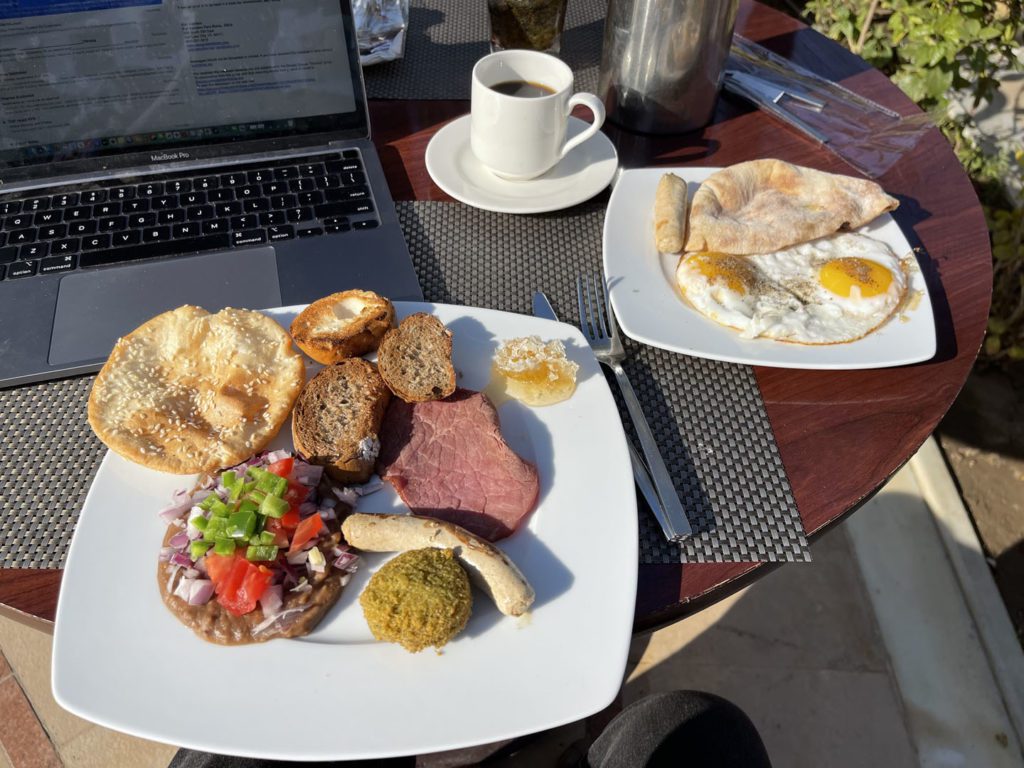
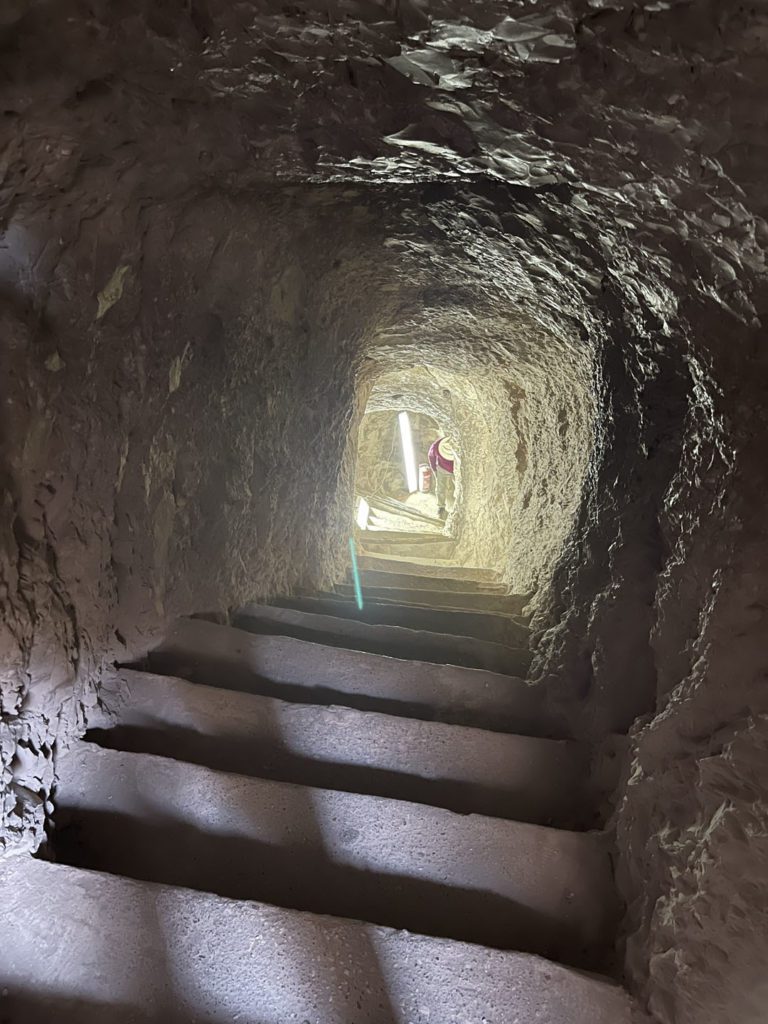
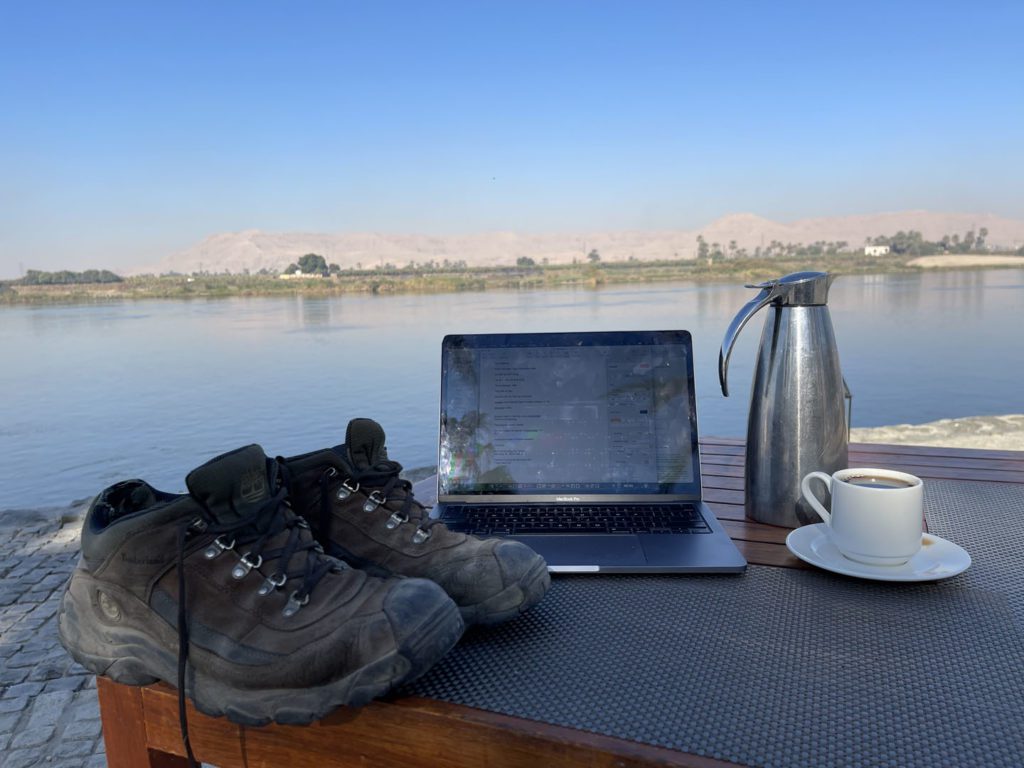
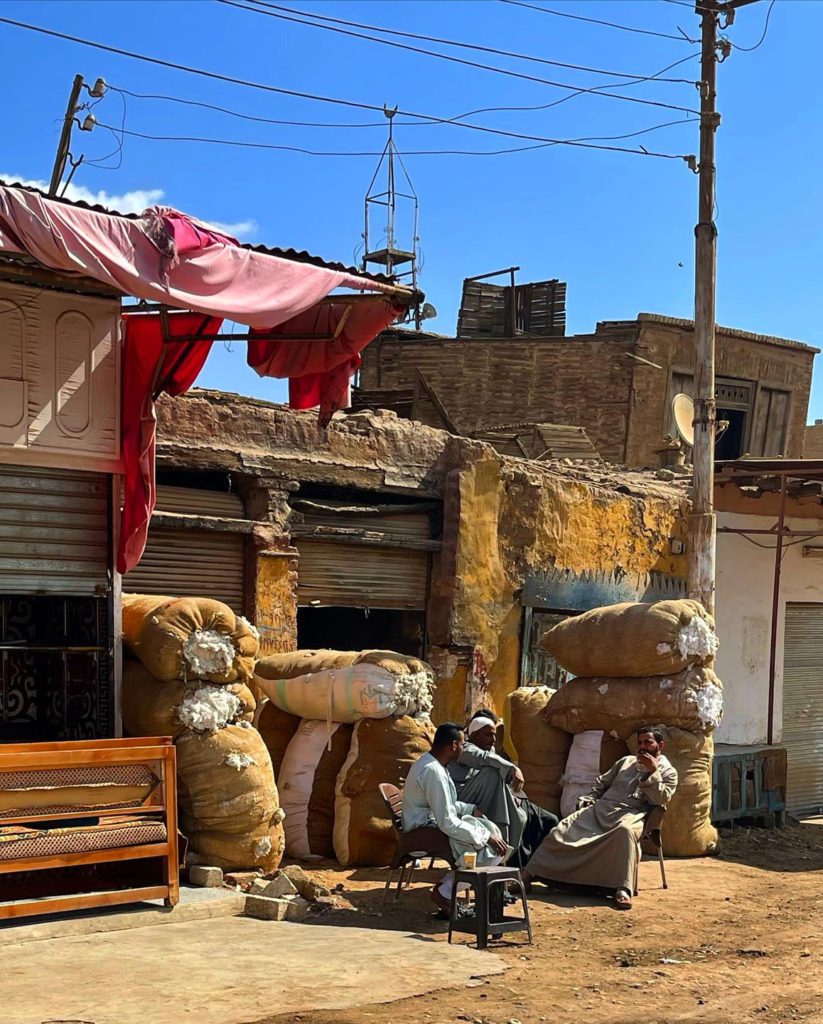
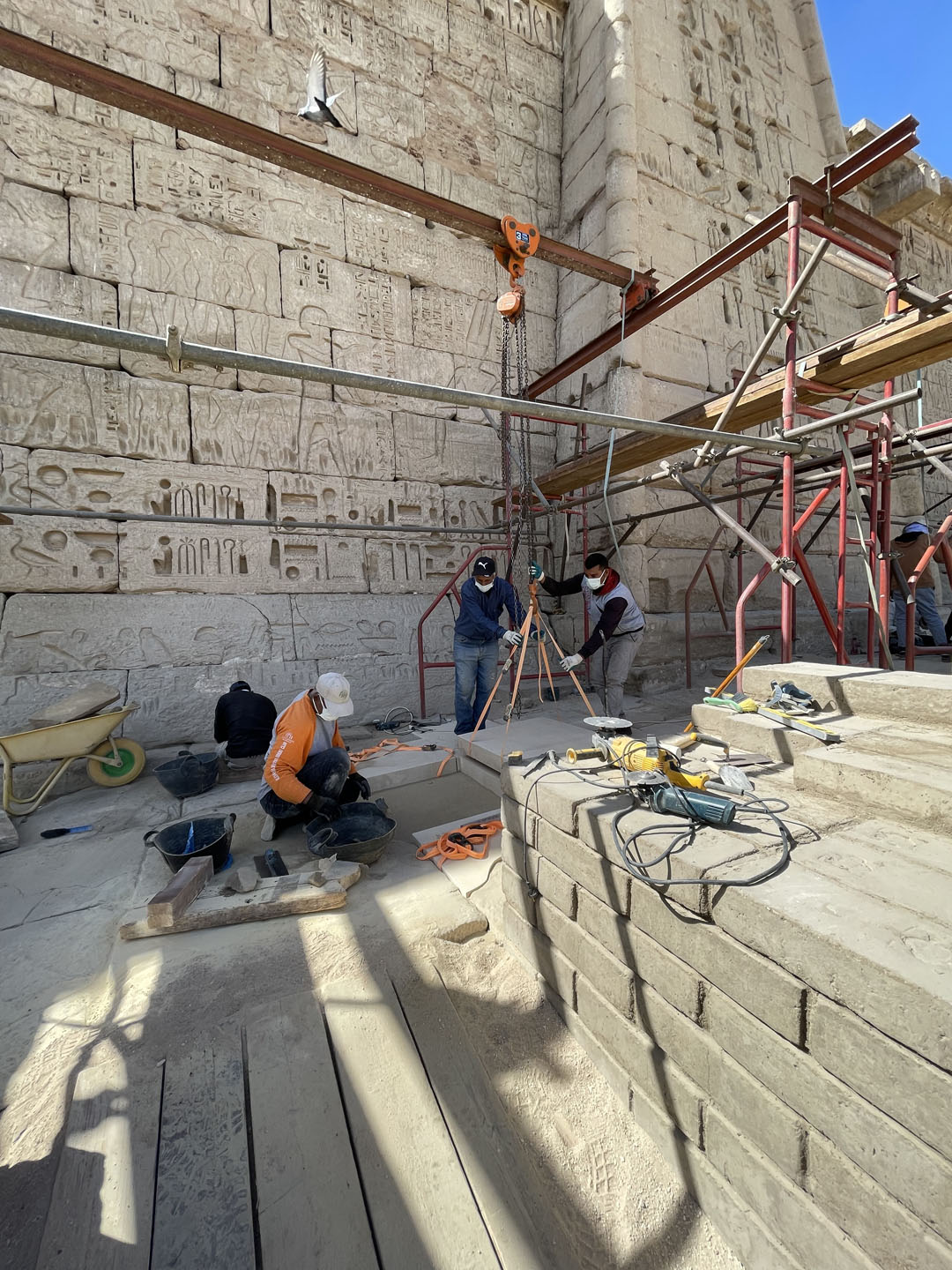
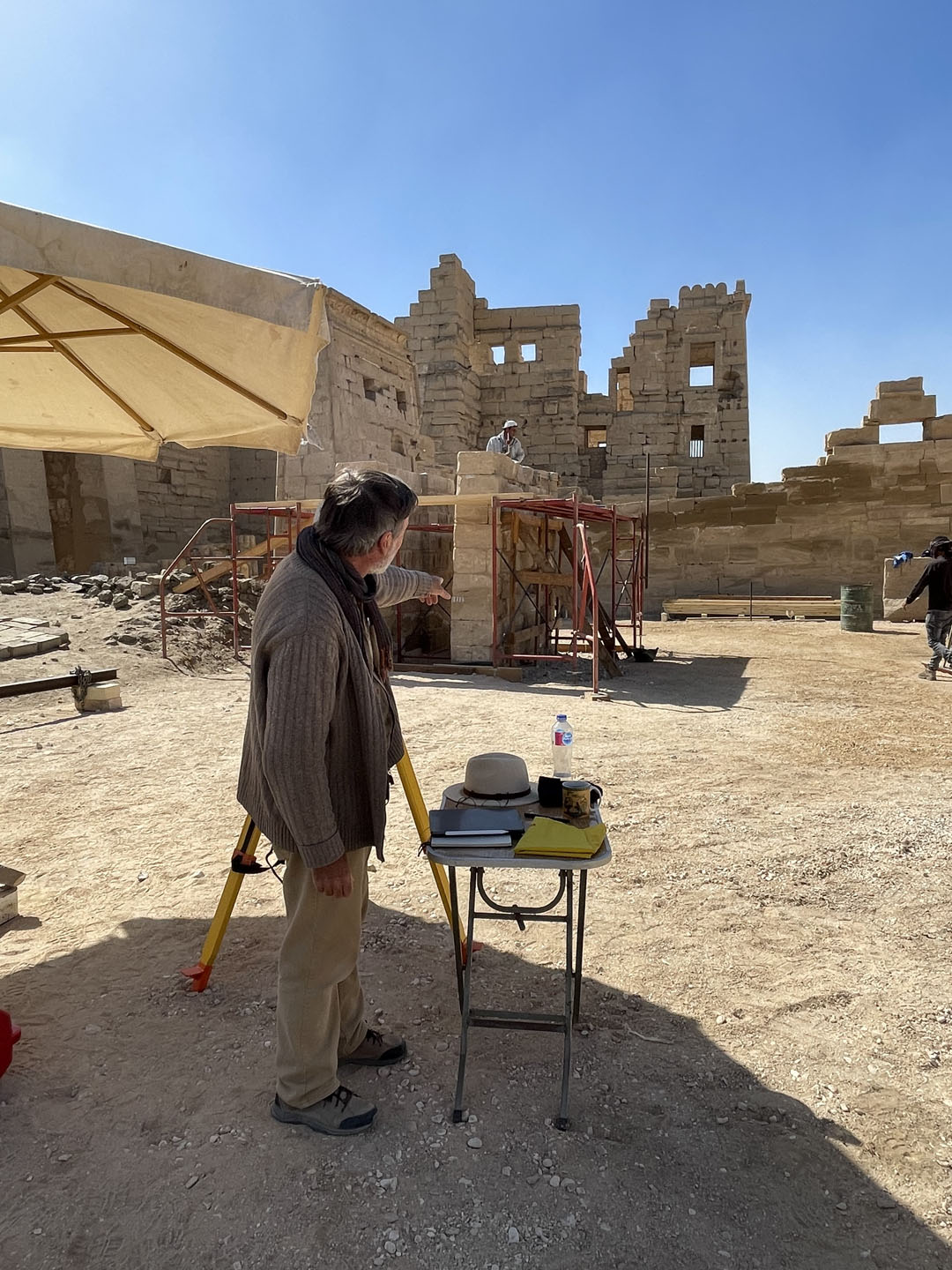
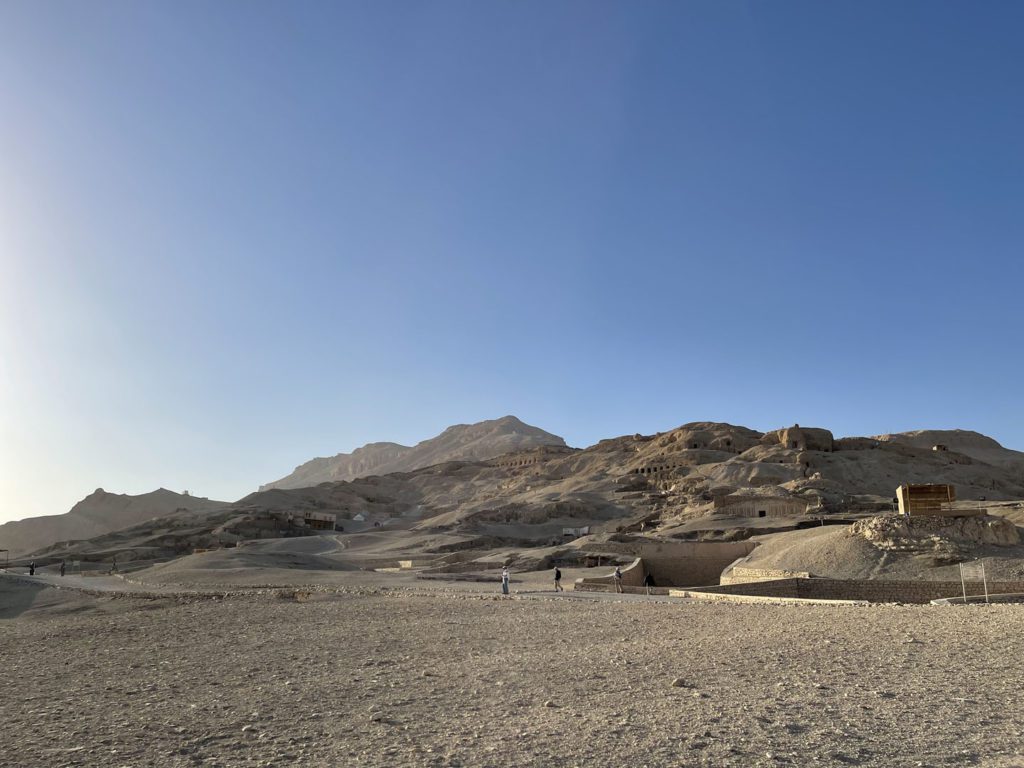
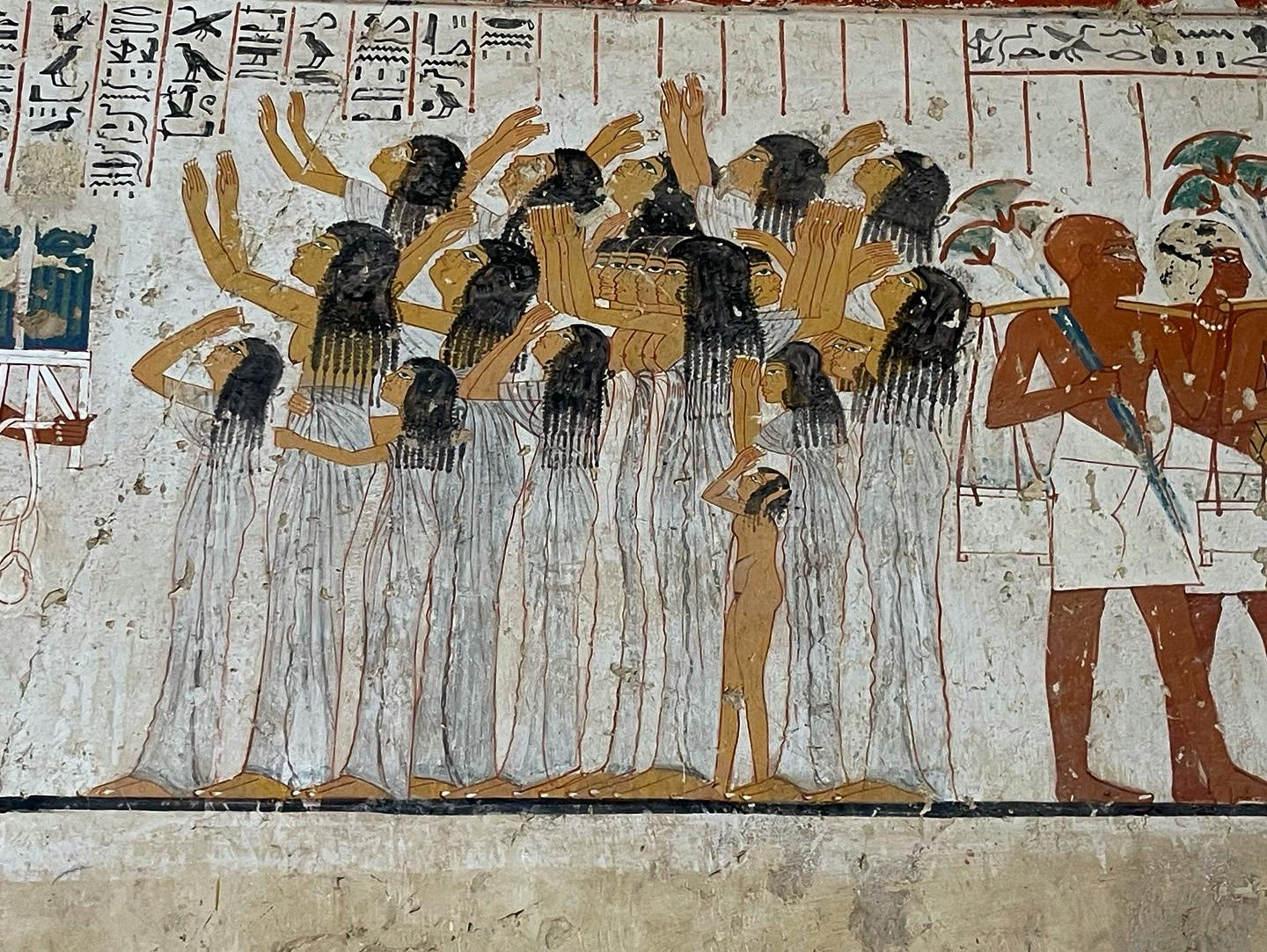


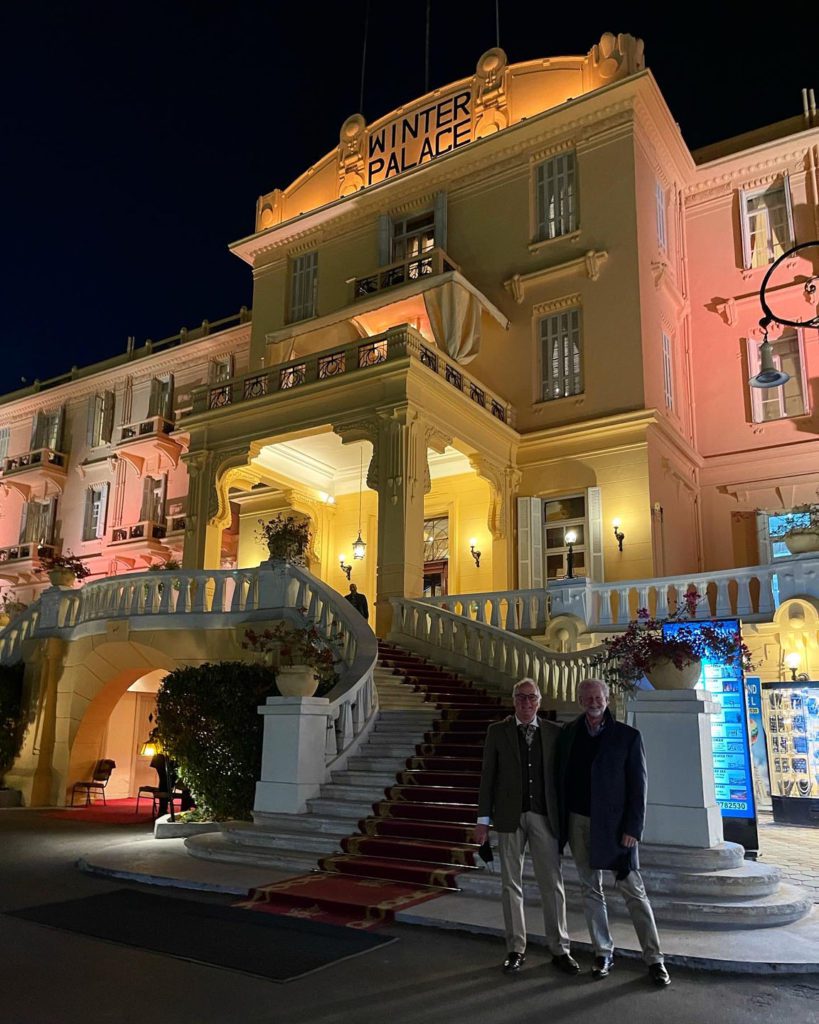
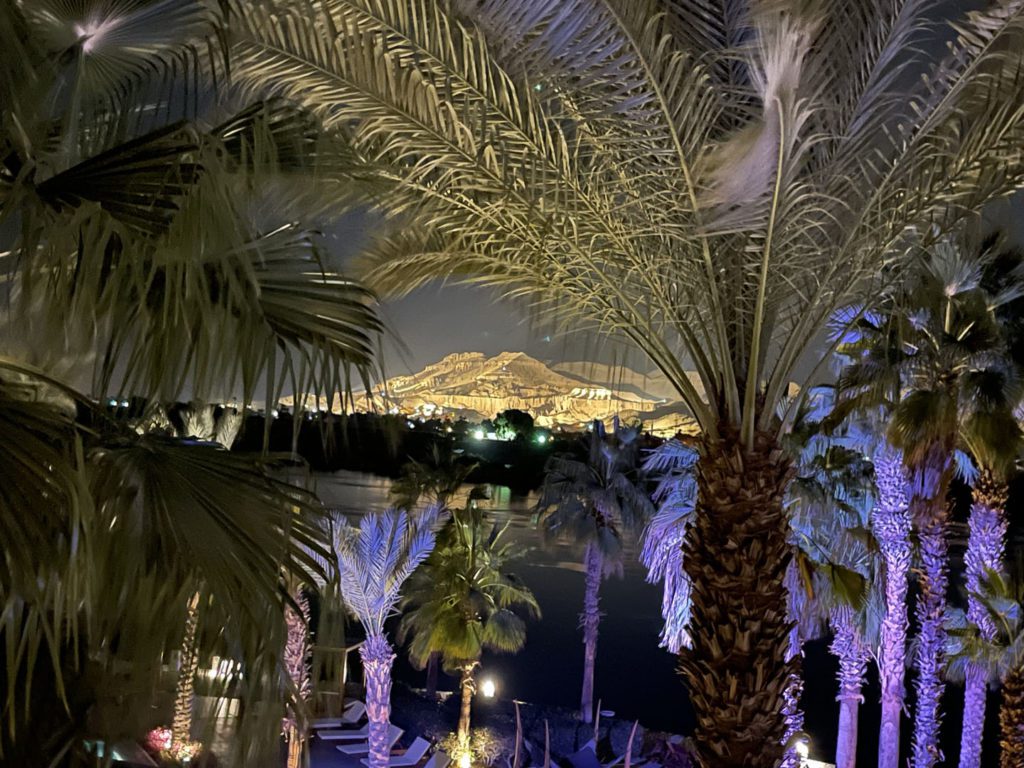
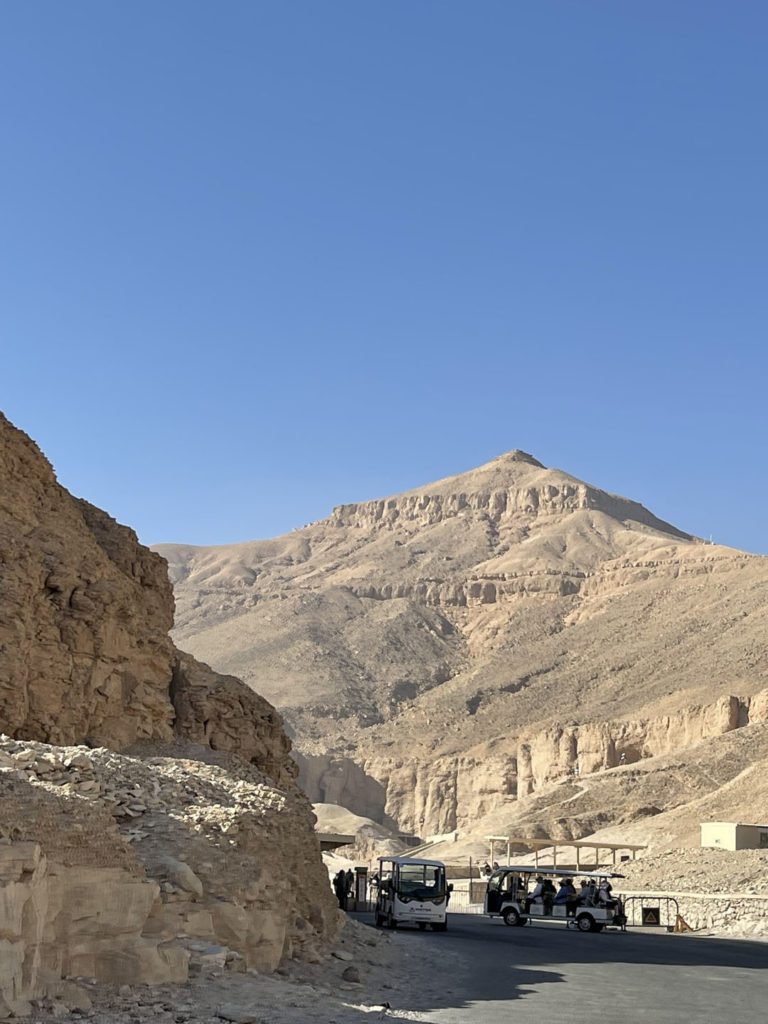
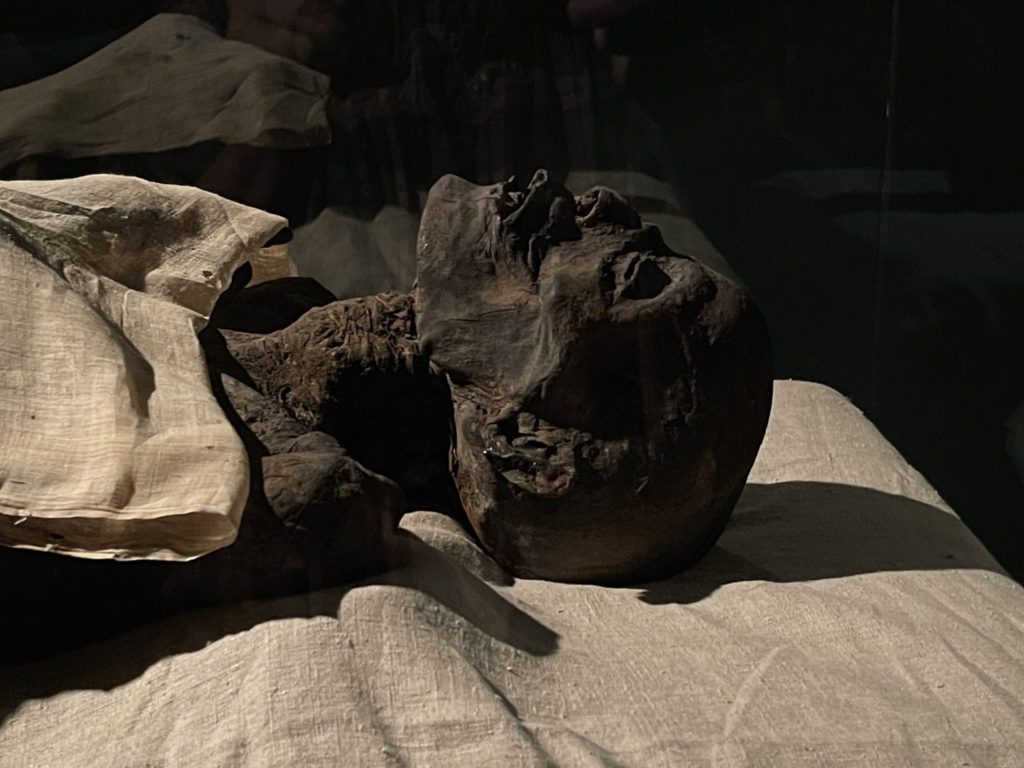
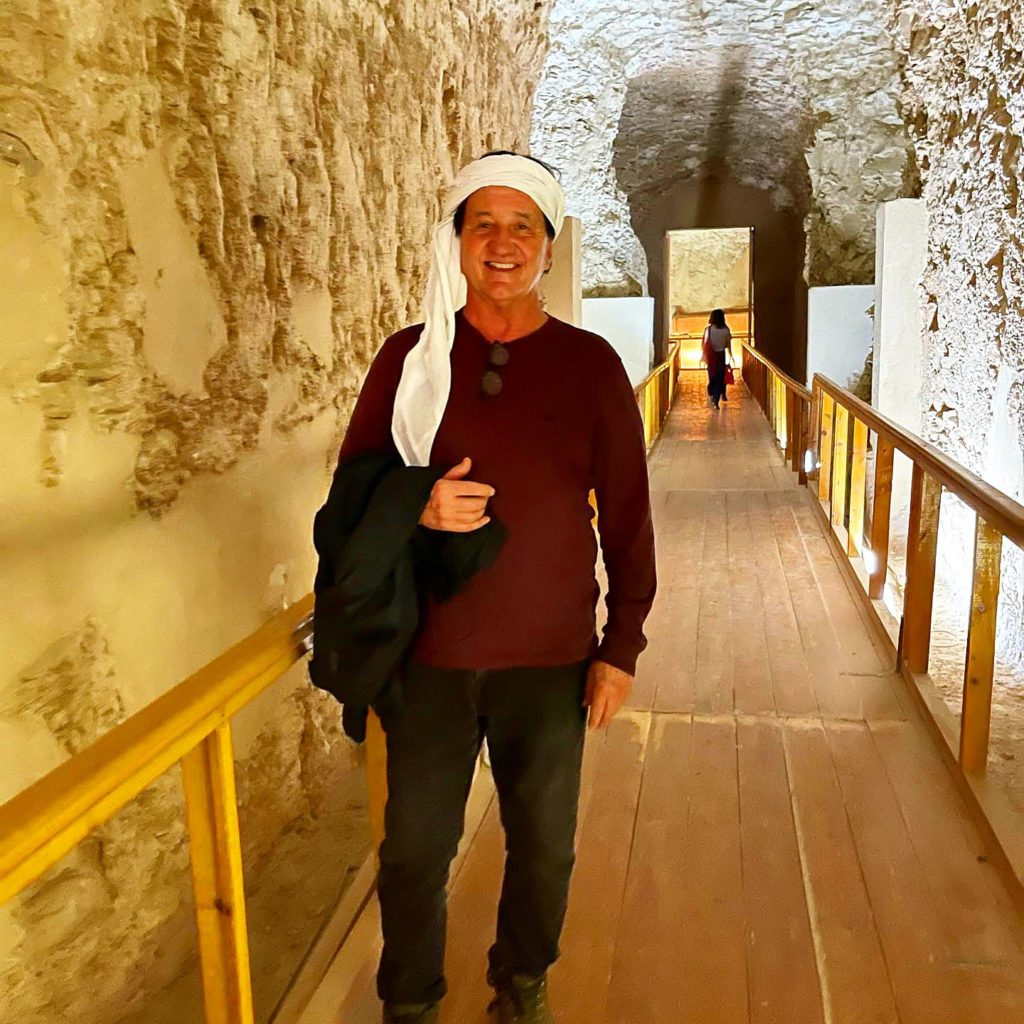
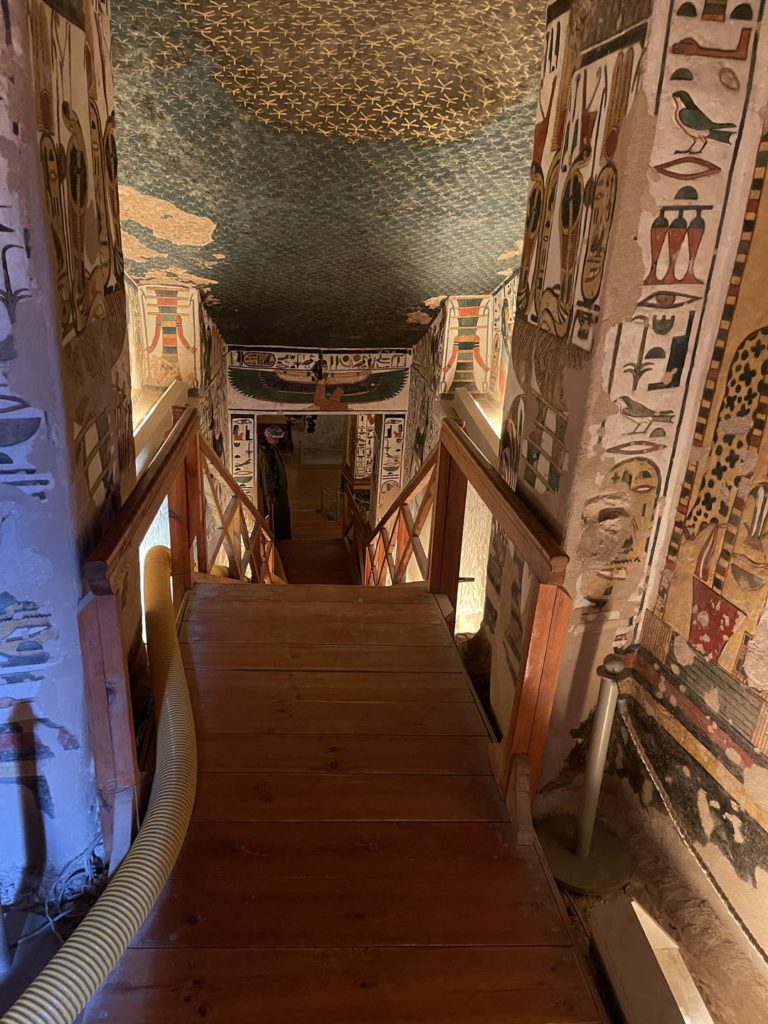
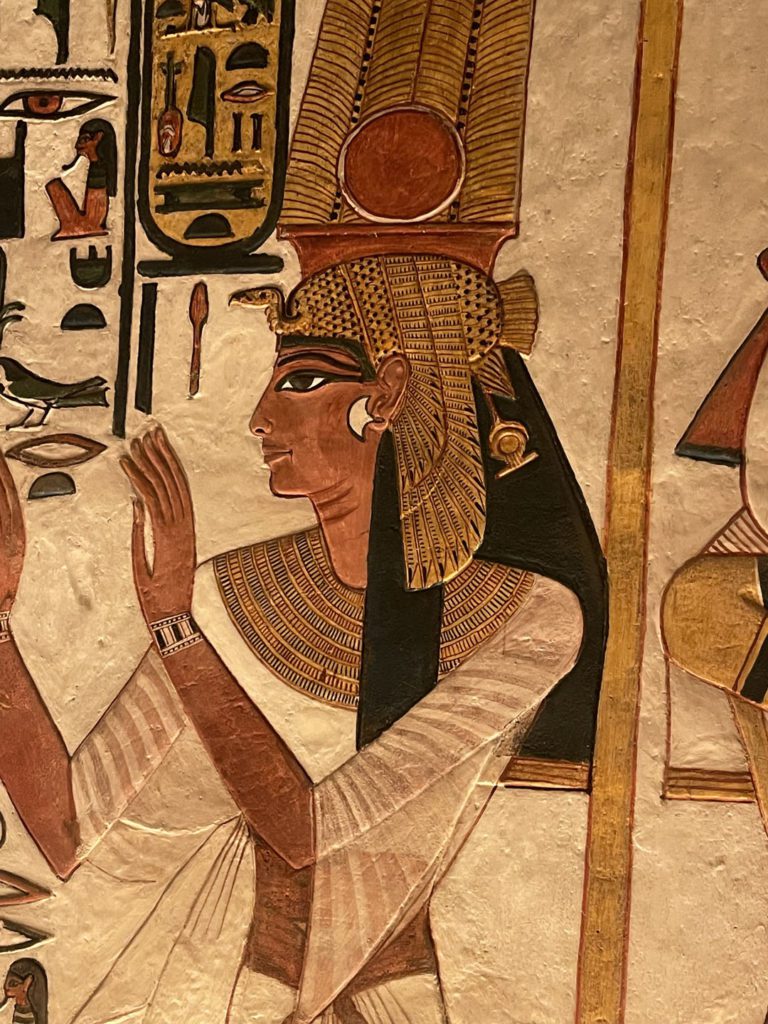
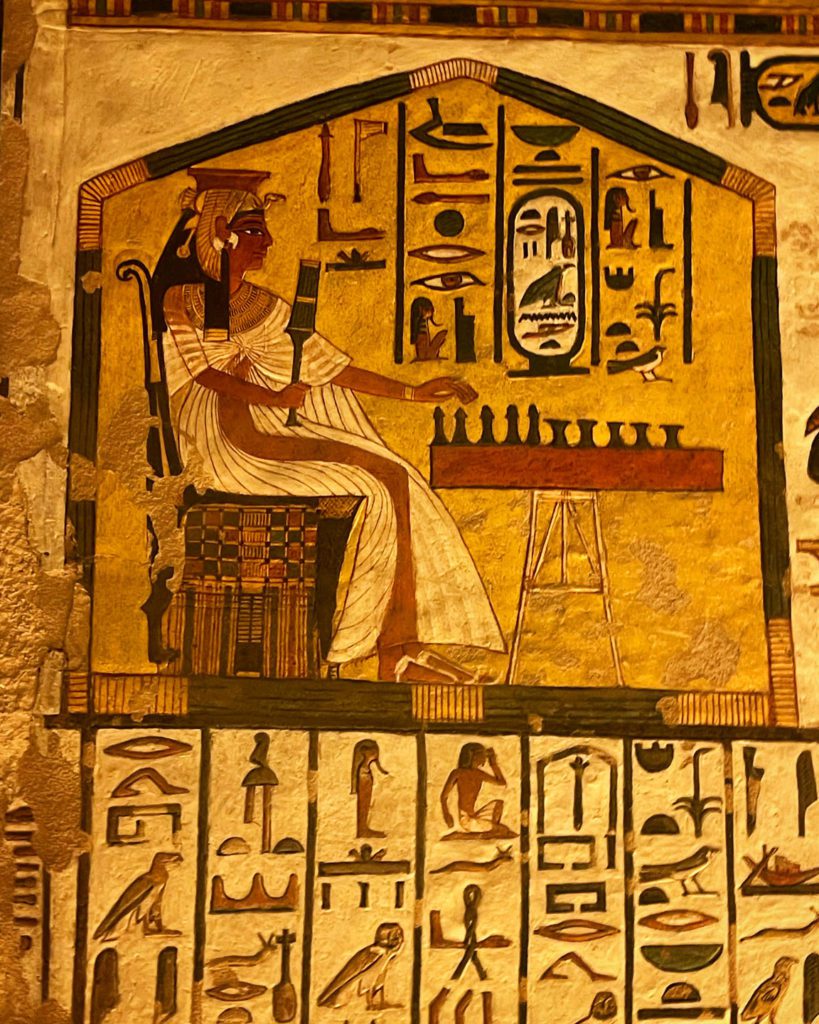
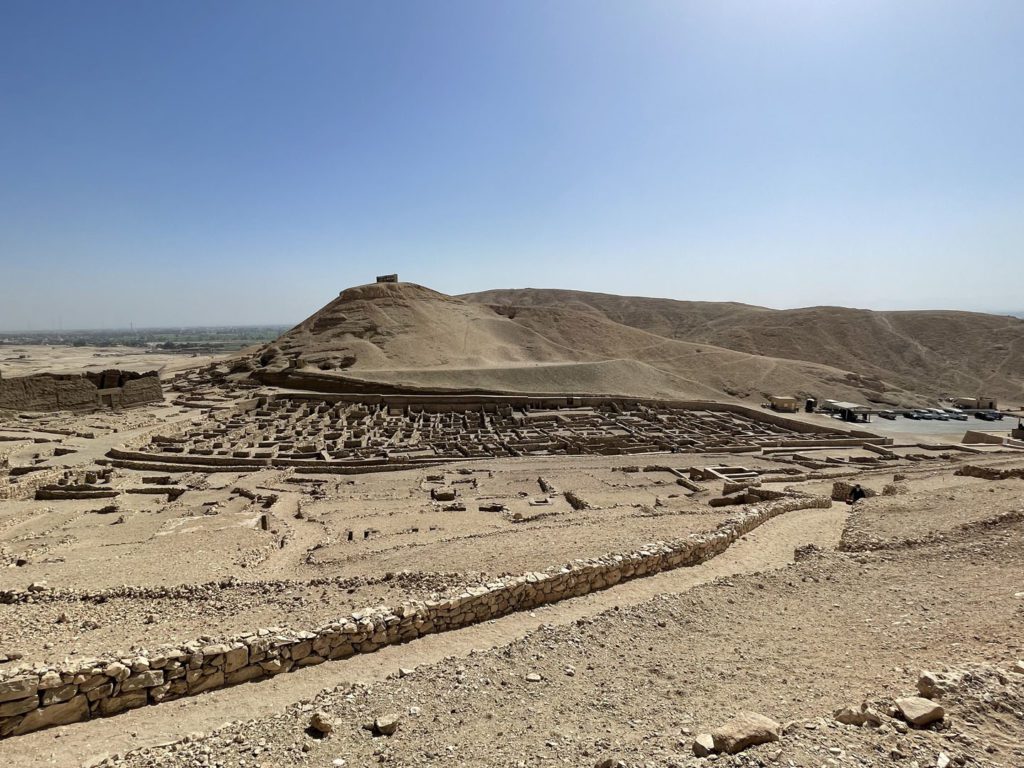
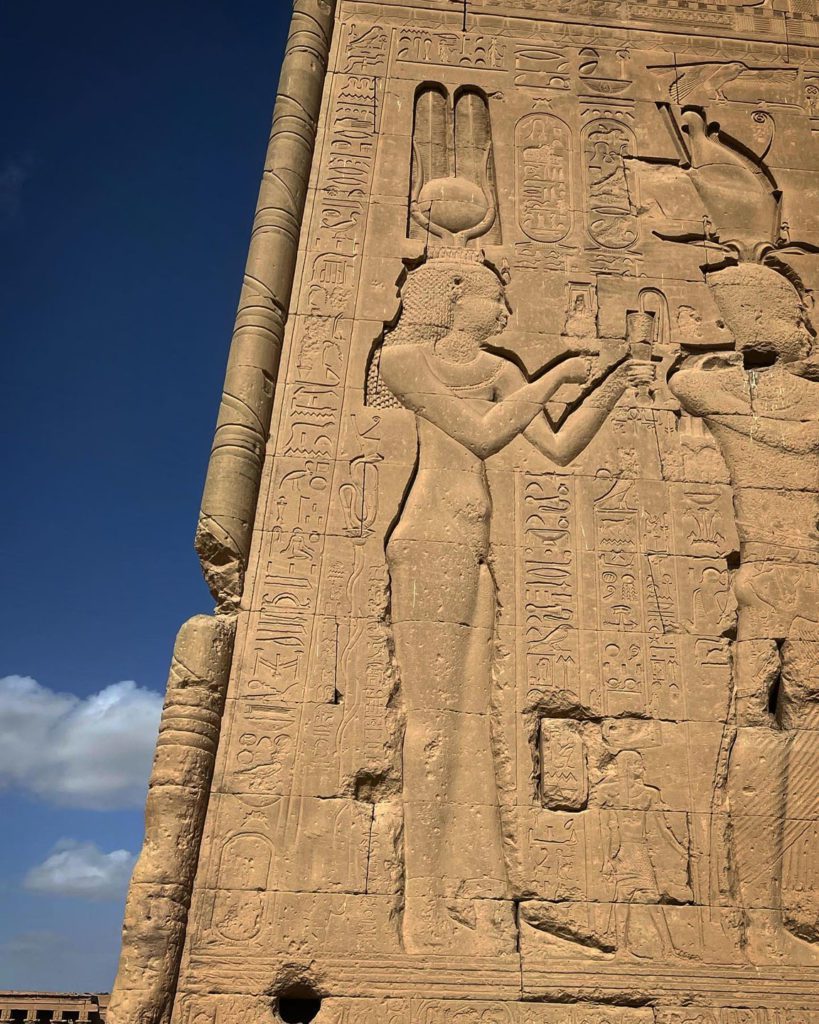
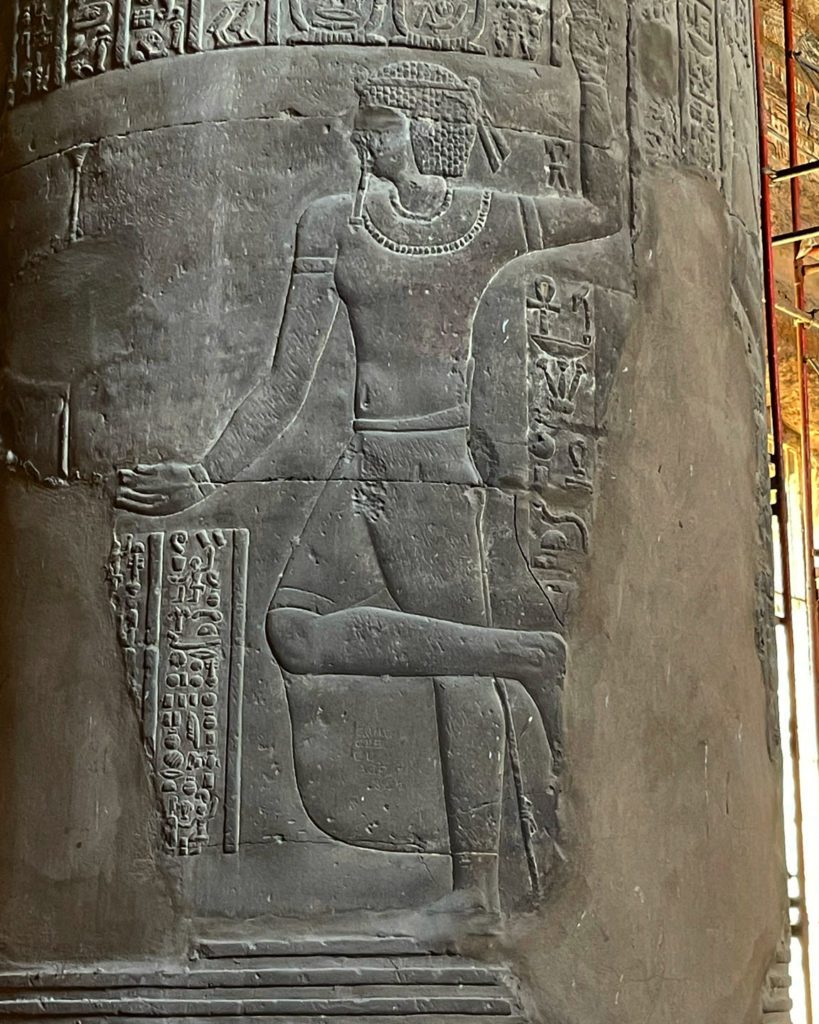
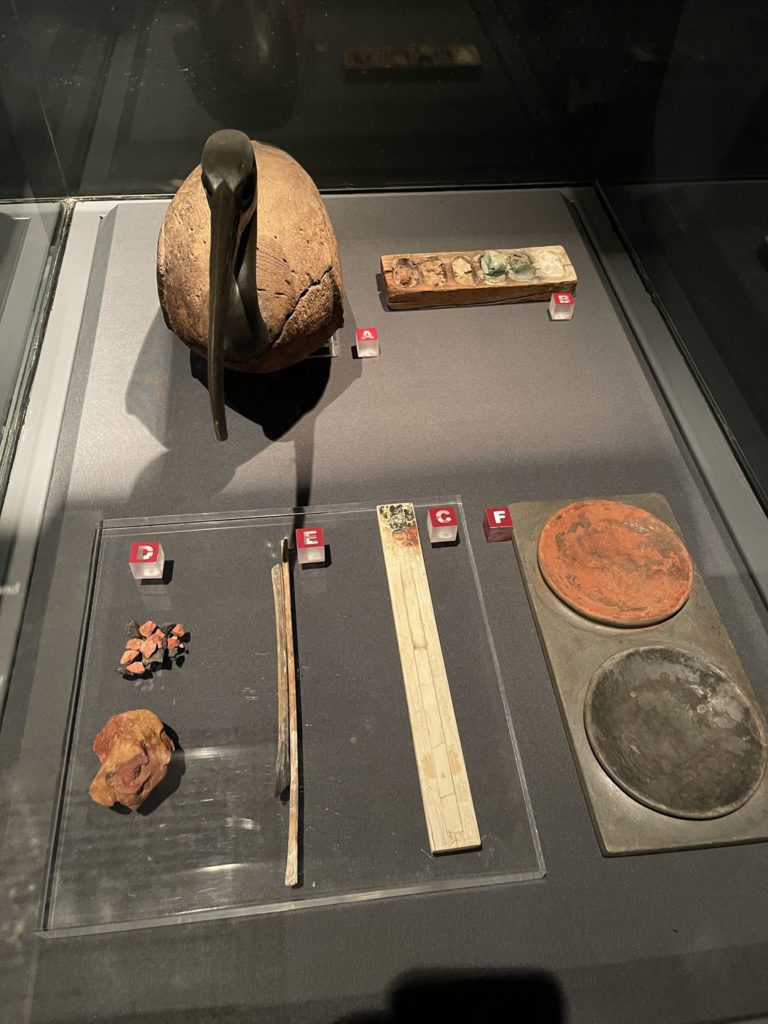
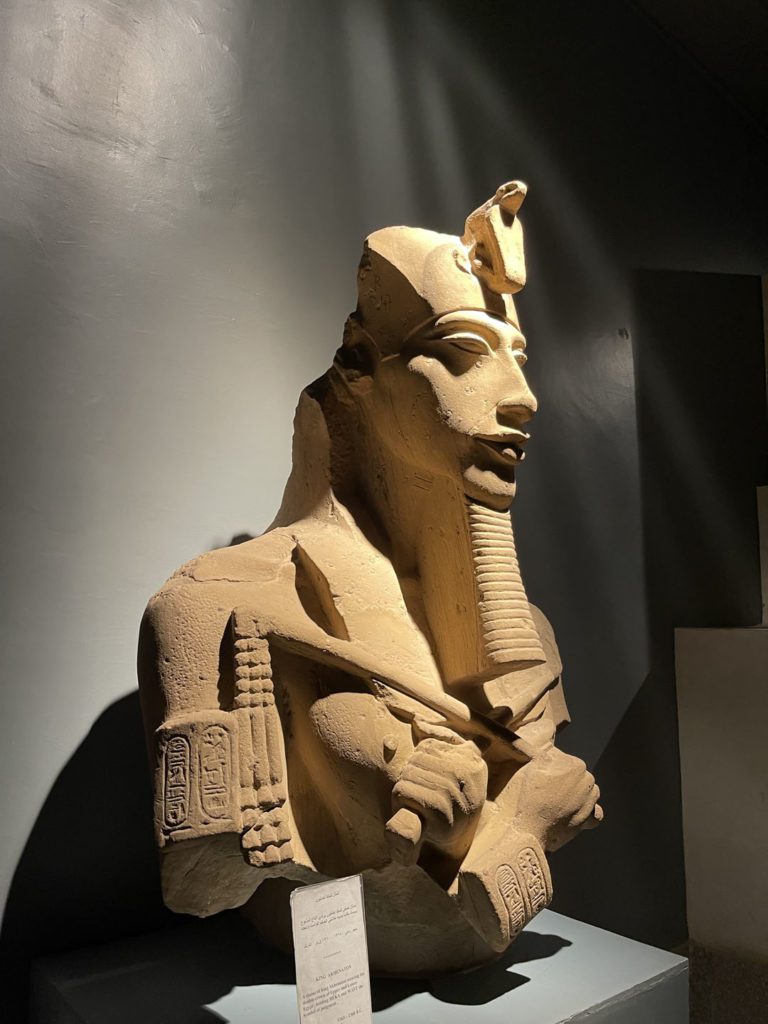
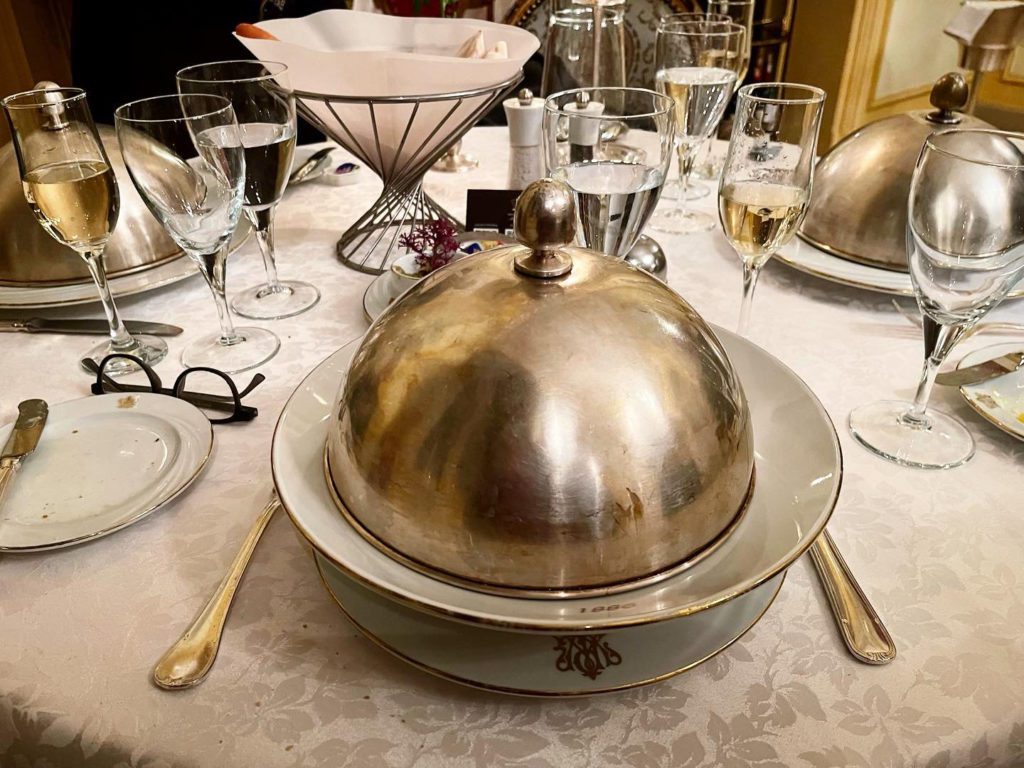
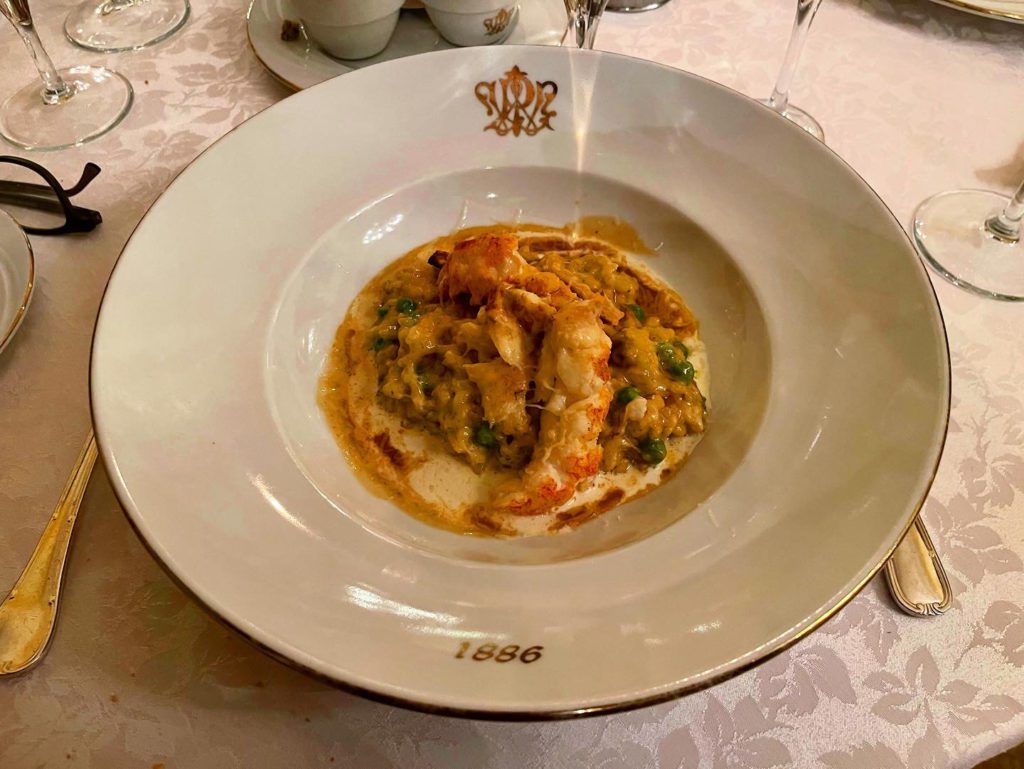
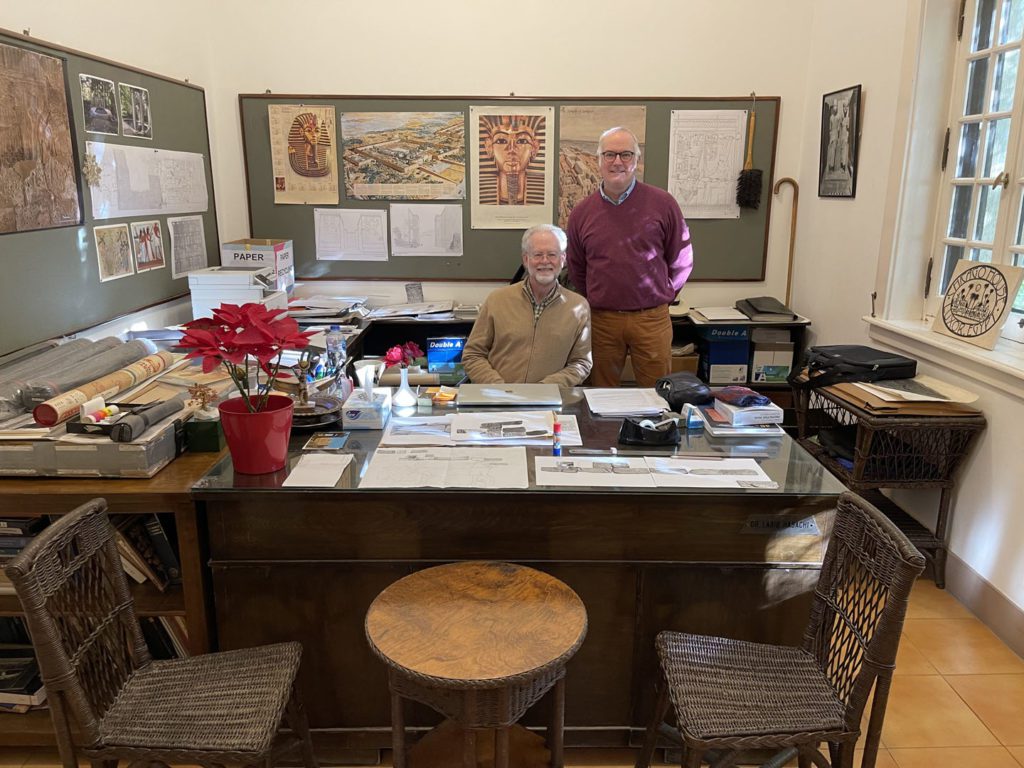
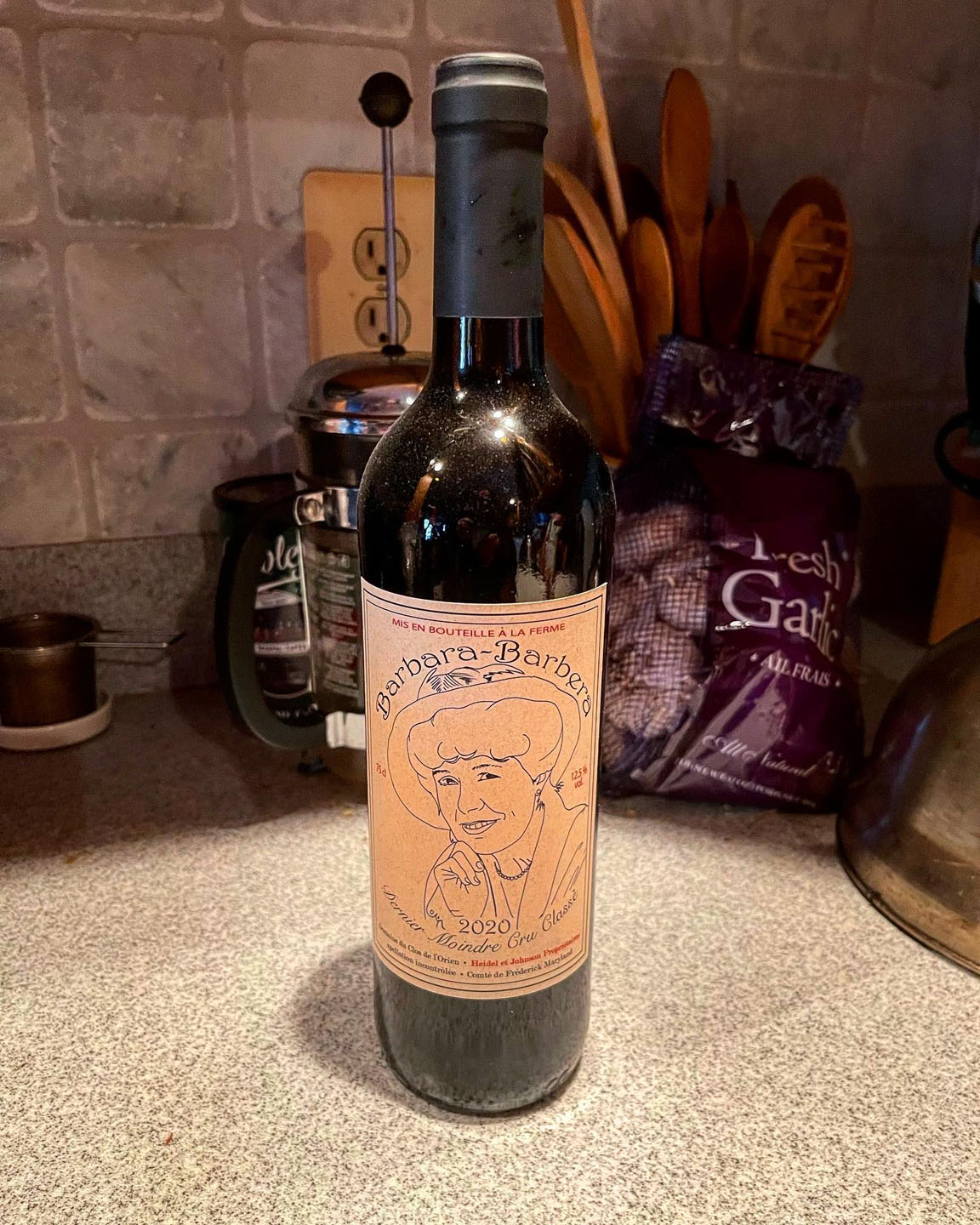
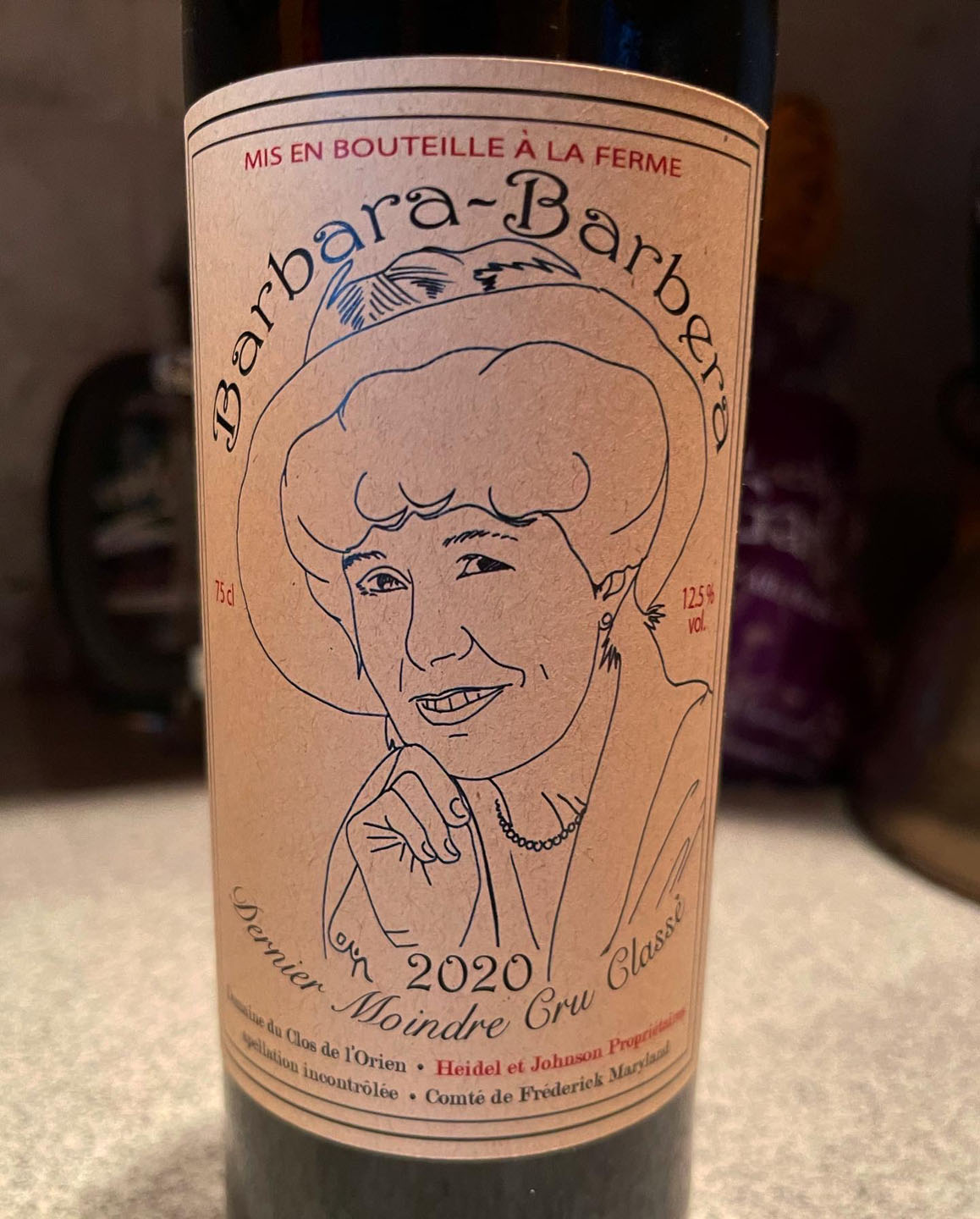
Welcome, home.
Quite a trip, Chuck, though I confess I might tire of Egyptian tombs after the first dozen and the hassle with Covid and airports would probably send me ballistic. Still, terrific pictures and those meals look wonderful..
Thank you Michael.
I hope travel becomes less problematic soon.
Despite the griping it was just – awesome – The tombs were all different,
The hassle – just like the buzzing of insects.
Cairo was great – but Luxor was exponentially “more”
I’m so glad I made it. I had no idea despite Barbara and Ray and Jay’s recommendations over the years.
Chuck
Great again. Thank you, Chuck.
You questioned the balance of “fact” and “feeling” in your blogs. I like the balance that you strike, changing sometimes as you go along, more of one and then more of the other. It feels friendly and conversational while carrying lots of fascinating facts I might not have picked up elsewhere.
My best wishes to you. Stay well!
Thanks so much Gary!
It is great to get some feedback.
Best
Chuck
What an experience! I’m so glad that you are able to have the opportunity to travel as you do. What other trips do you have lined up?
Thanks Charlie.
I’m trying to make up for the 5 trips lost to covid.
And to race against time!
I hope travels becomes less problematic if the plague is slowing.
I want to go EVERYWHERE!
Best
Chuck
Fabulous, brave, intrepid traveler…I’m envious, I’ve been to Egypt but not Dendera…except thru books, marvelous, endearing books. Much thanks for selling me 100s of them over the years, happy trails…..
Brave? Desperate more than that!
Thank you reading and especially taking time to write!
Best
Chuck
So happy for you (and all us vicariosi)! Many fond memories stirred by your whip-ass tour in the company of genuine experts, and friends to boot. I recalled, reading your interactions with authority, how quickly the “old ladies” of our group caught on to, and took advantage of, the invisibility bestowed upon us. We shamelessly and without consequence stuck our noses everywhere in our visits to tombs and exhibits. At worst we were shooed off like pesky kids, as when we tried to find the reason for one massive holdup at the gate for an internal flight. It was 2000, and the day after the US election, everywhere we heard “Boosh? Goore?”
Thanks Kathleen
I was indeed very lucky
Complex country past and present.
I appreciate your reading and taking the time to comment!
Chuck
Great experience….I, too, had a great time in that spectacular country. It was one of my last 2 trips before covid interfered. I visited in January 2020 followed by a visit to Jordan in February 2020…..
As usual, I went on a Globus itinerary. Luxor was my favorite and Globus had us booked in really nice hotels. I especially enjoyed the 4-night Nile cruise and the visit to Abu Simbel.
The only not so good experience was the flight to Luxor being delayed at least 3 hours with no explanations or apologies. Other than that, all went well. I did not visit King Tut’s tomb because our tour director mentioned that it is not as exciting as the other tombs we visited.
If given a chance, I would want to visit again. 10 days were not enough….
Livia
I dont know how many tombs in the 4 valleys I went down.
They were so different.
The Kings and Queens were more religious
The Nobles were more about living the good (after) life
The Artisans we carefully done as it was work on their own afterlife.
Chuck
Maybe the most amazing trip I’ve had.